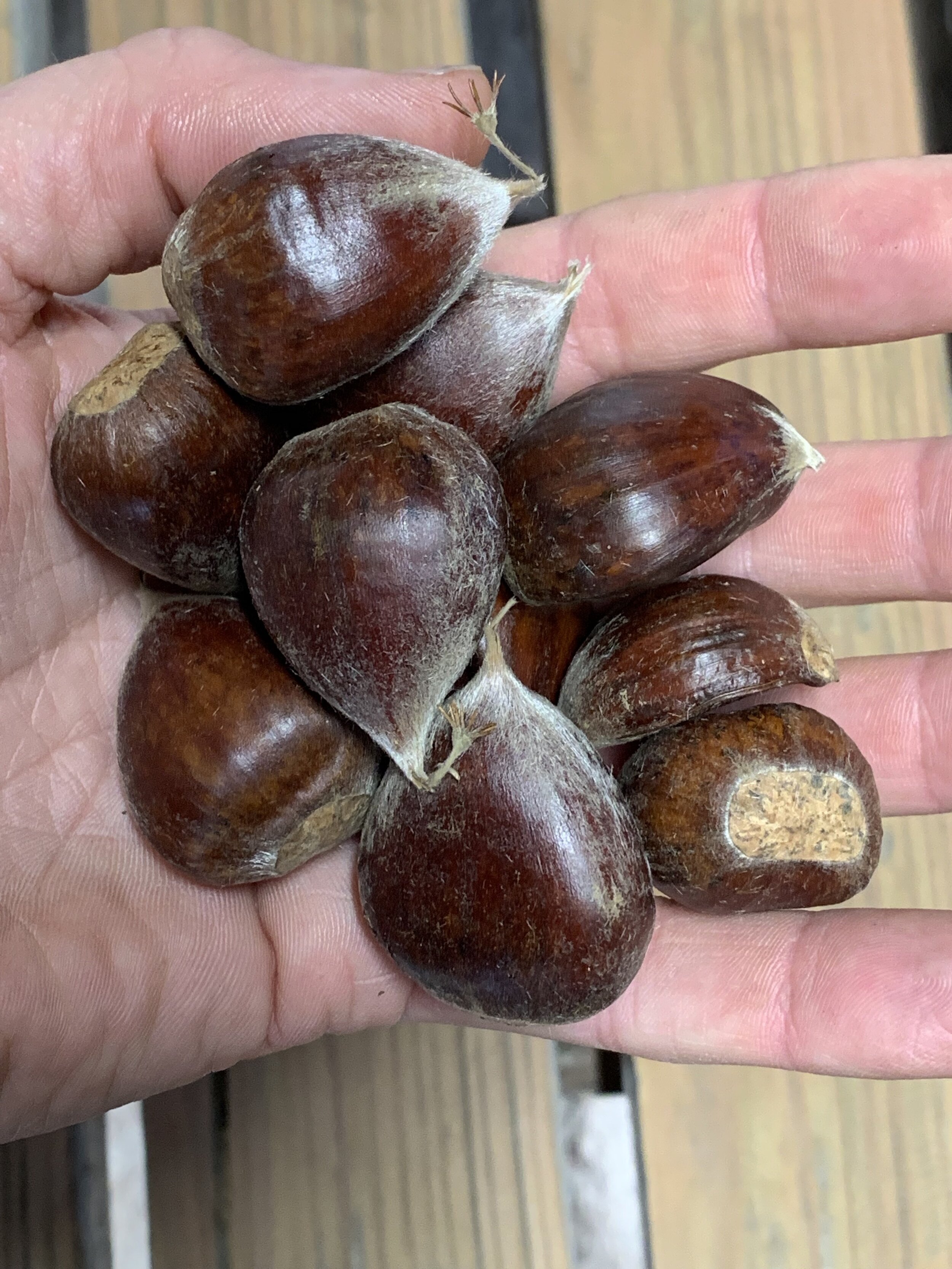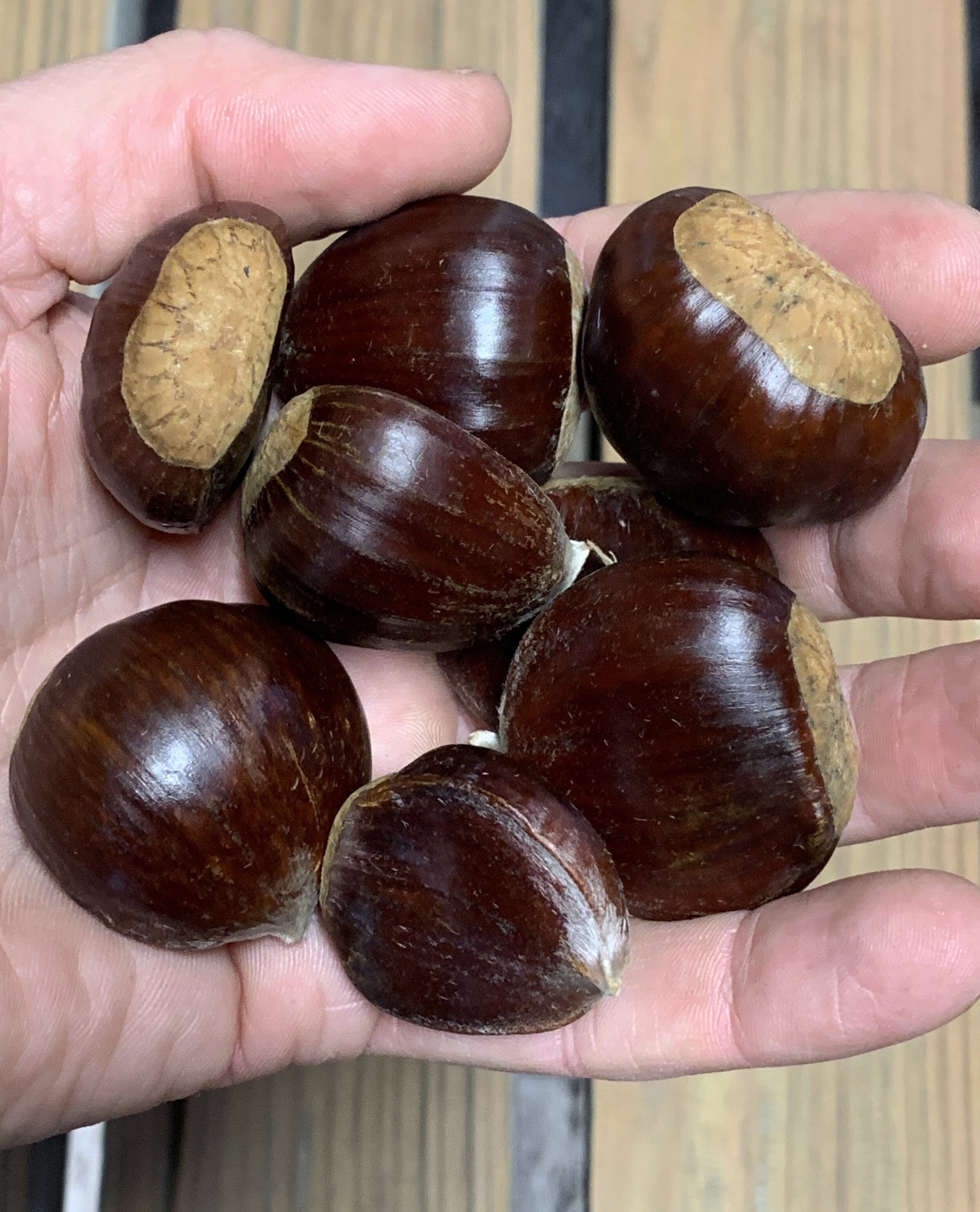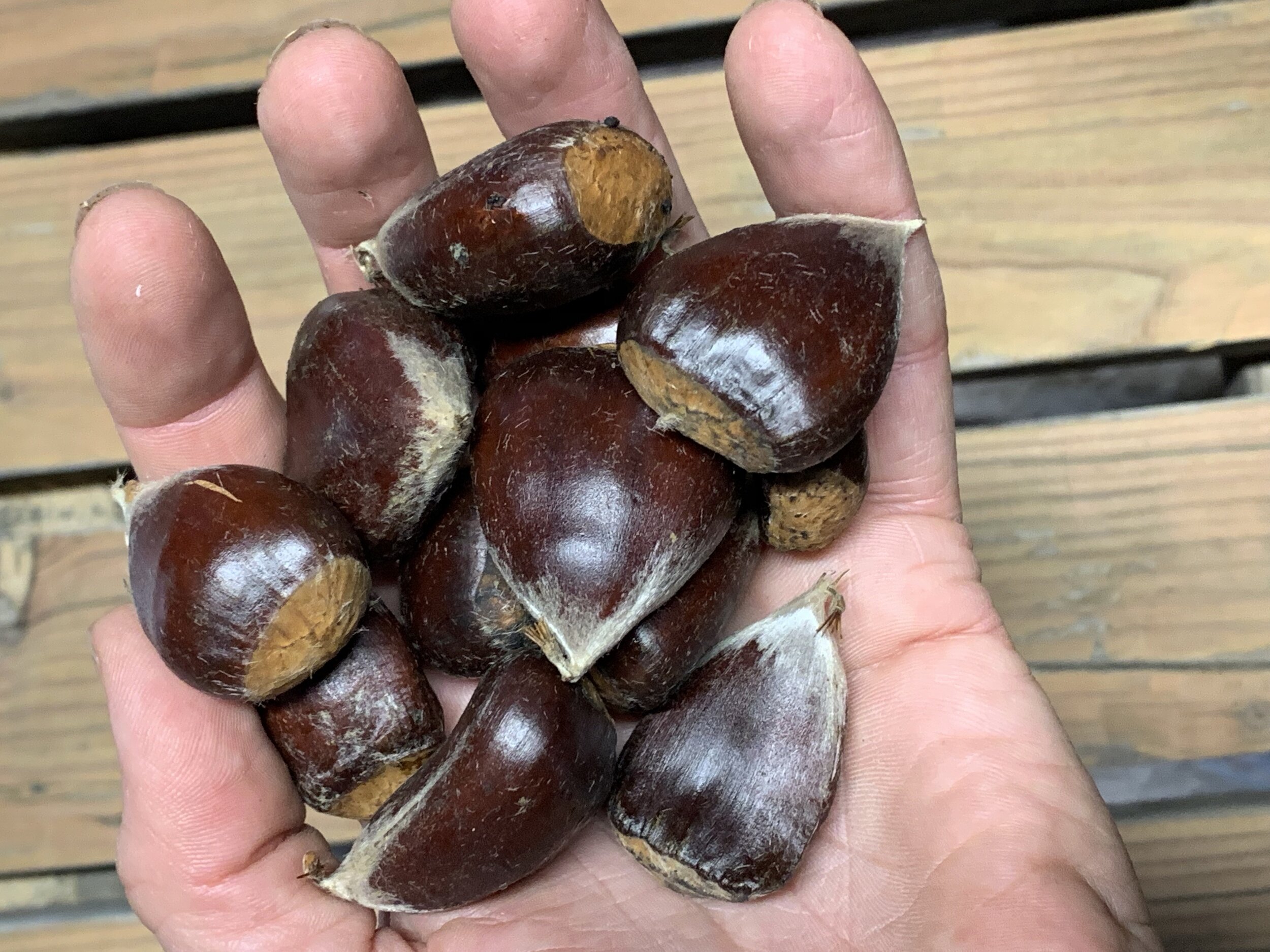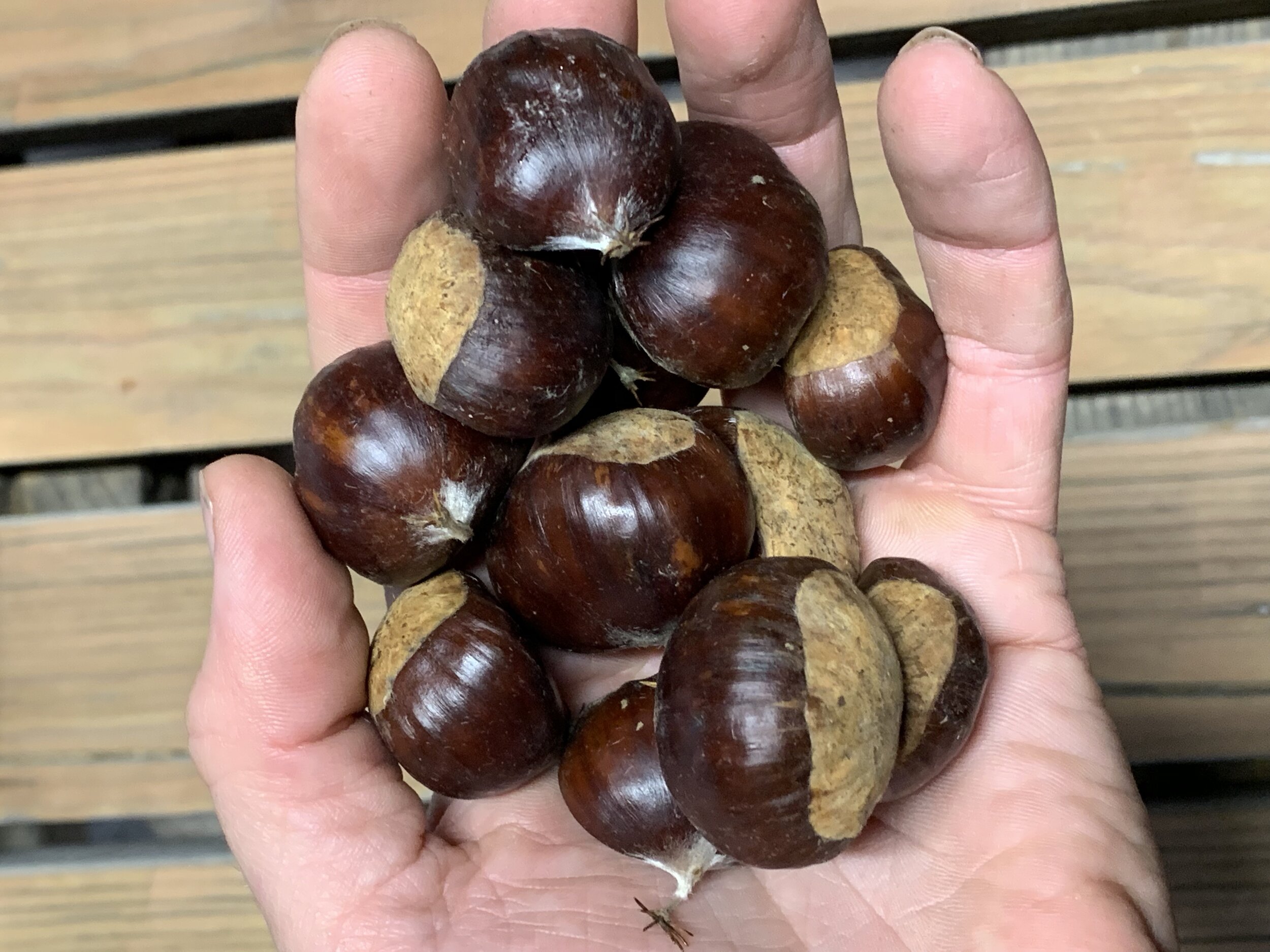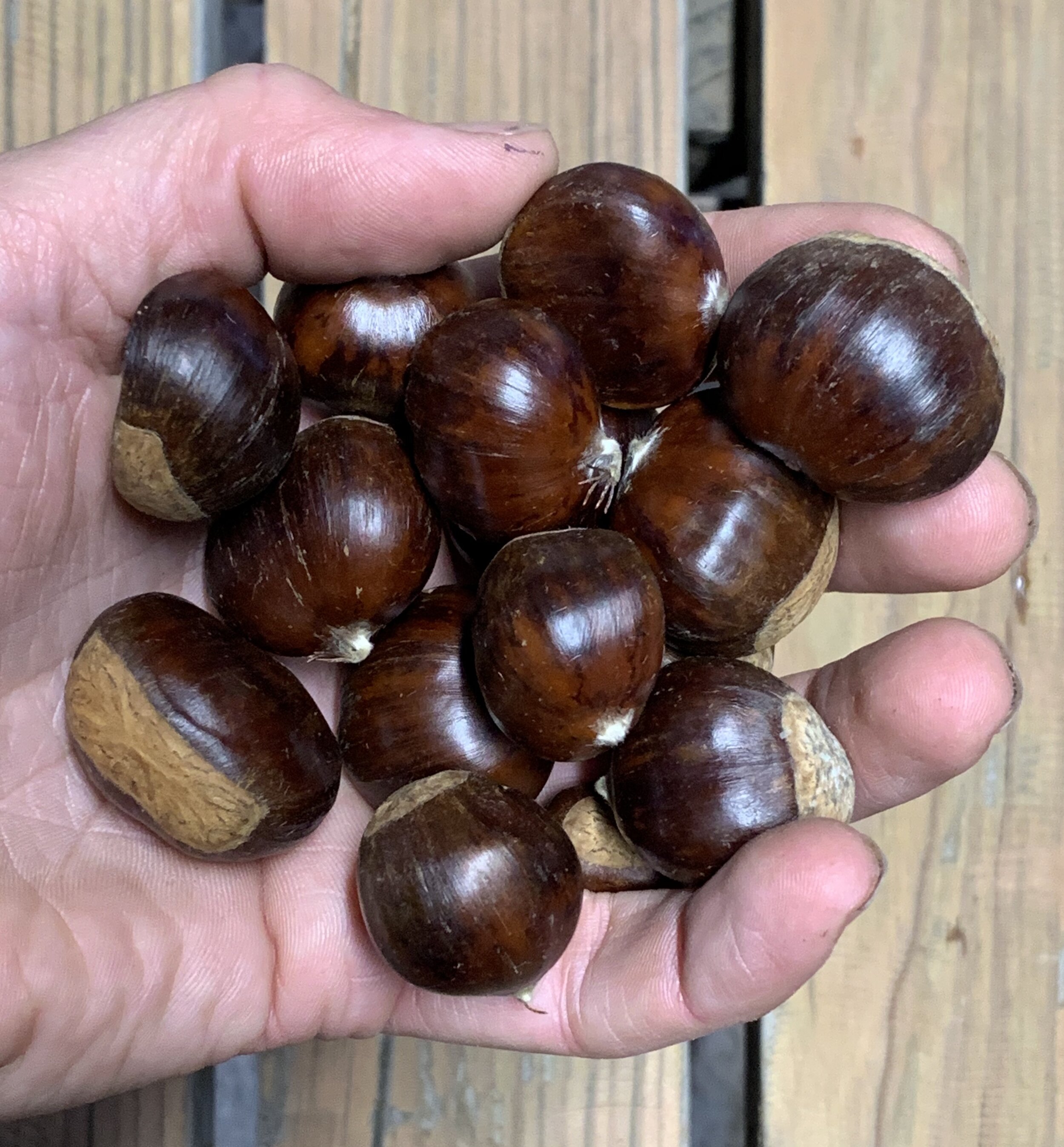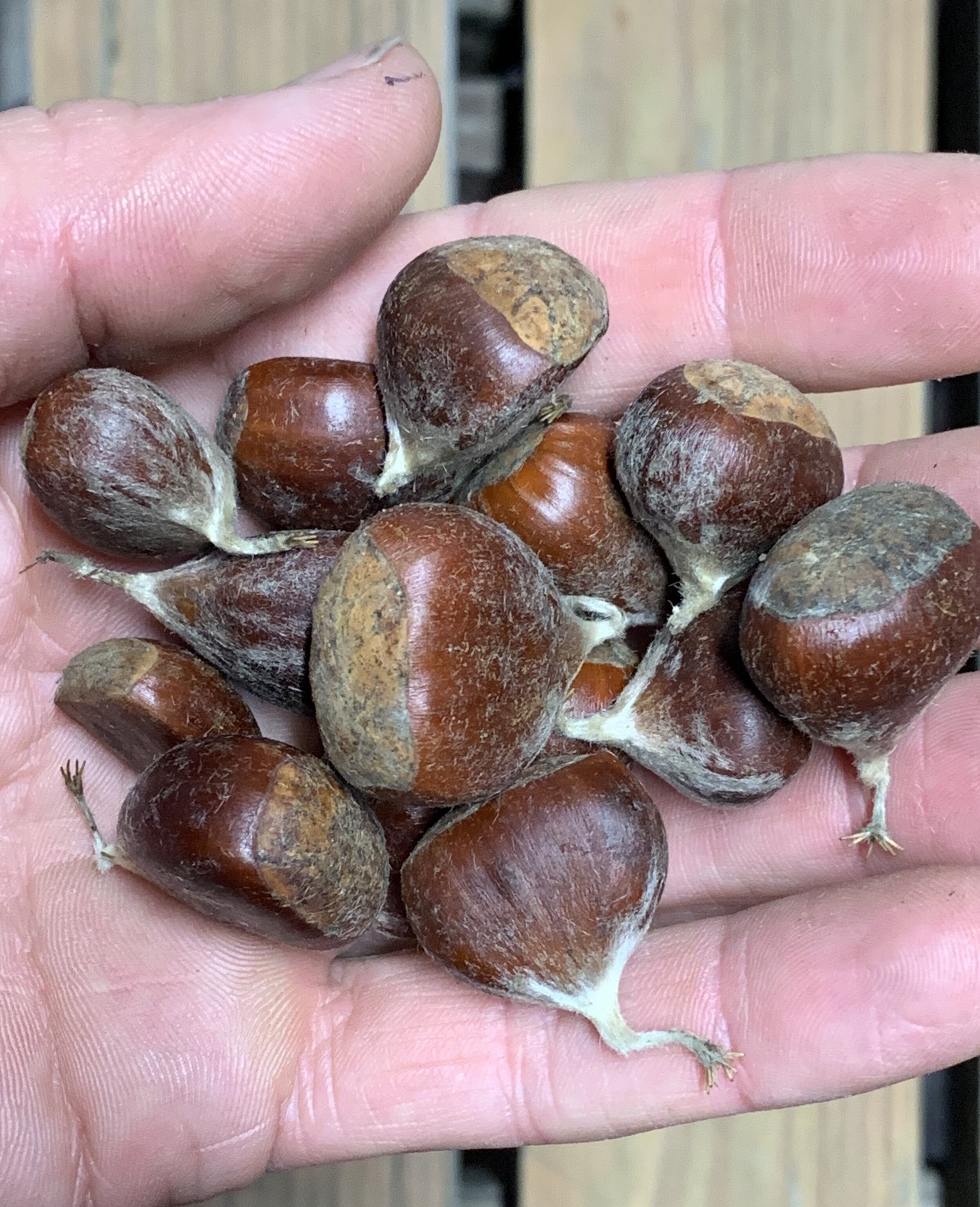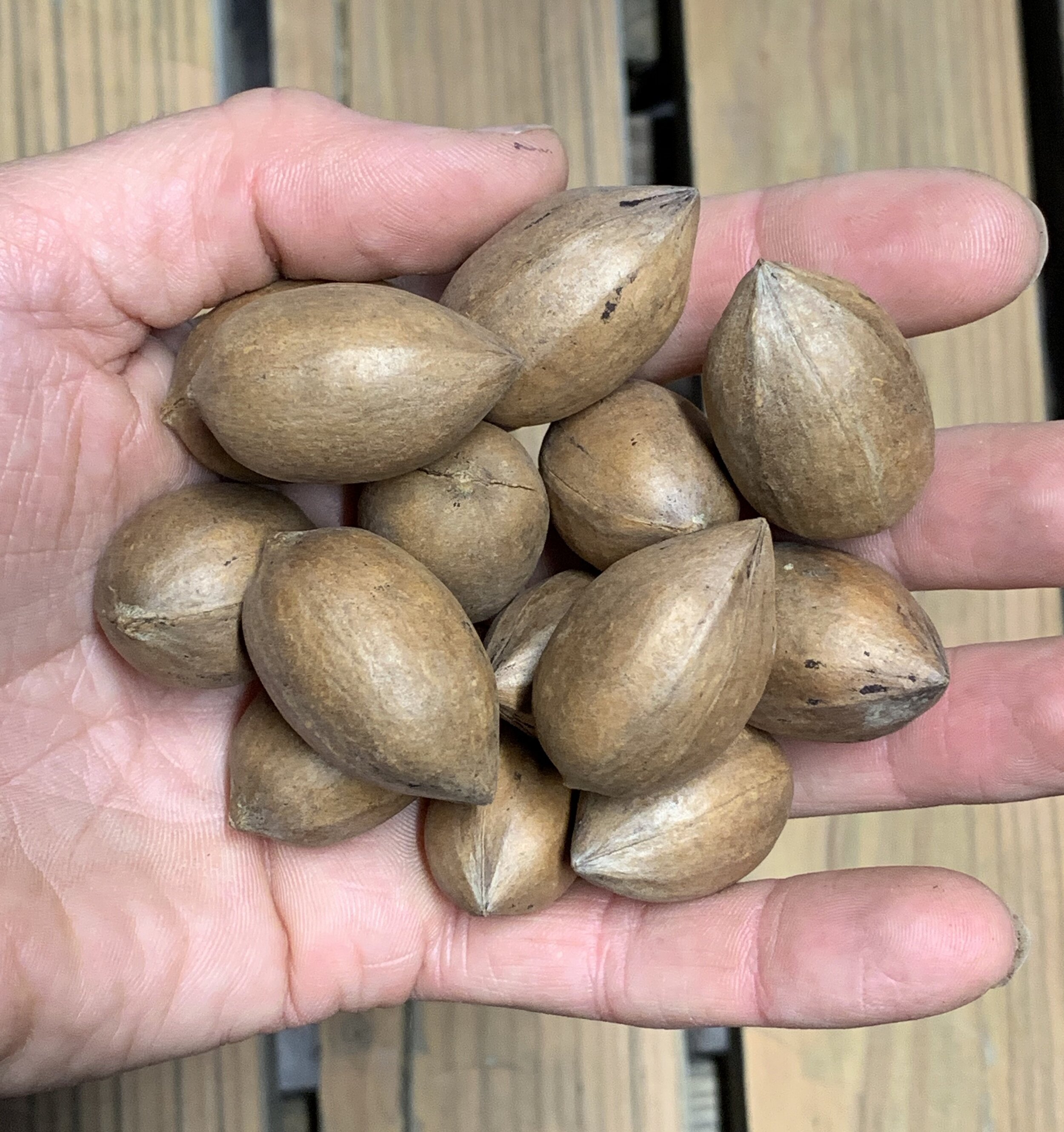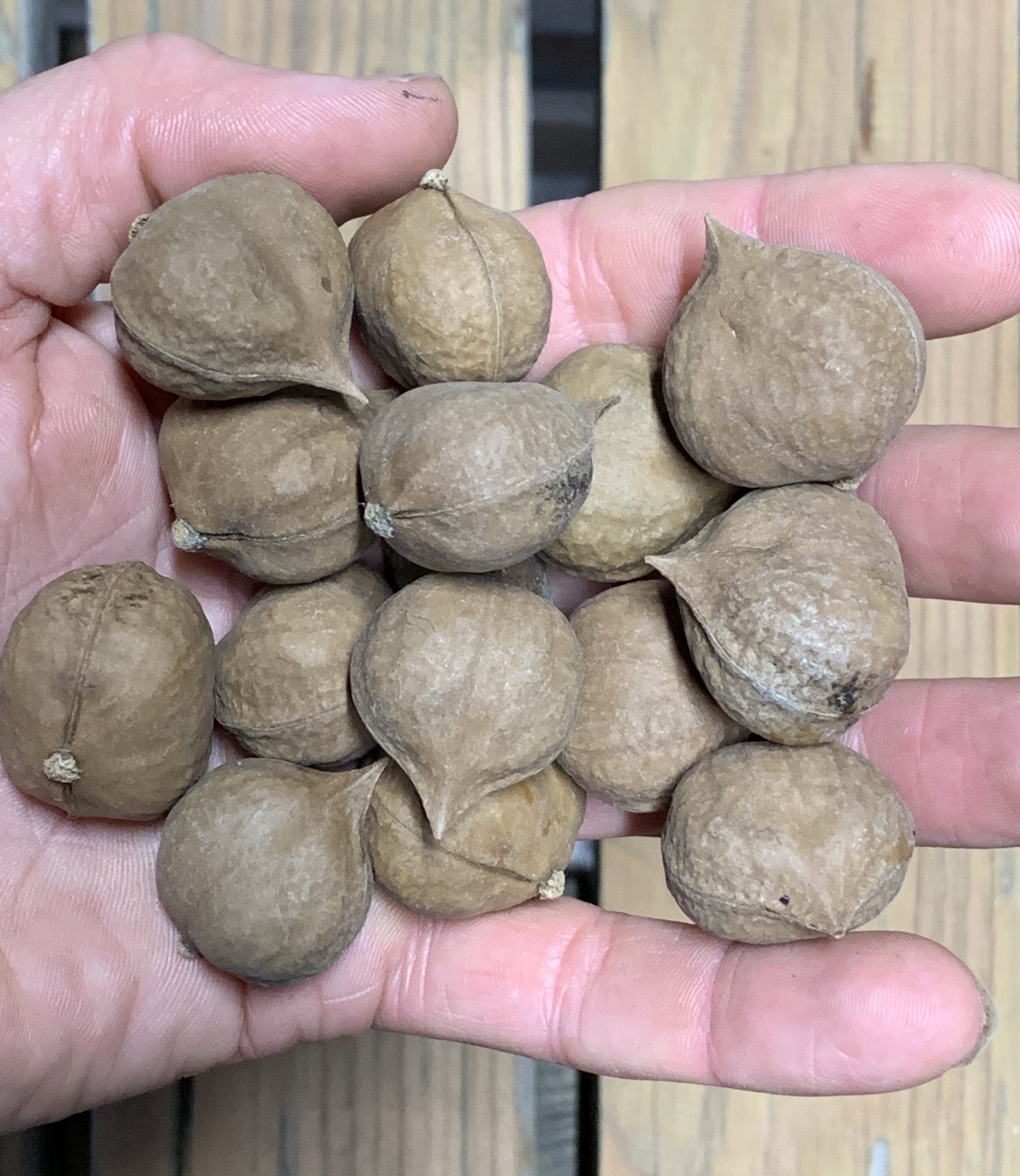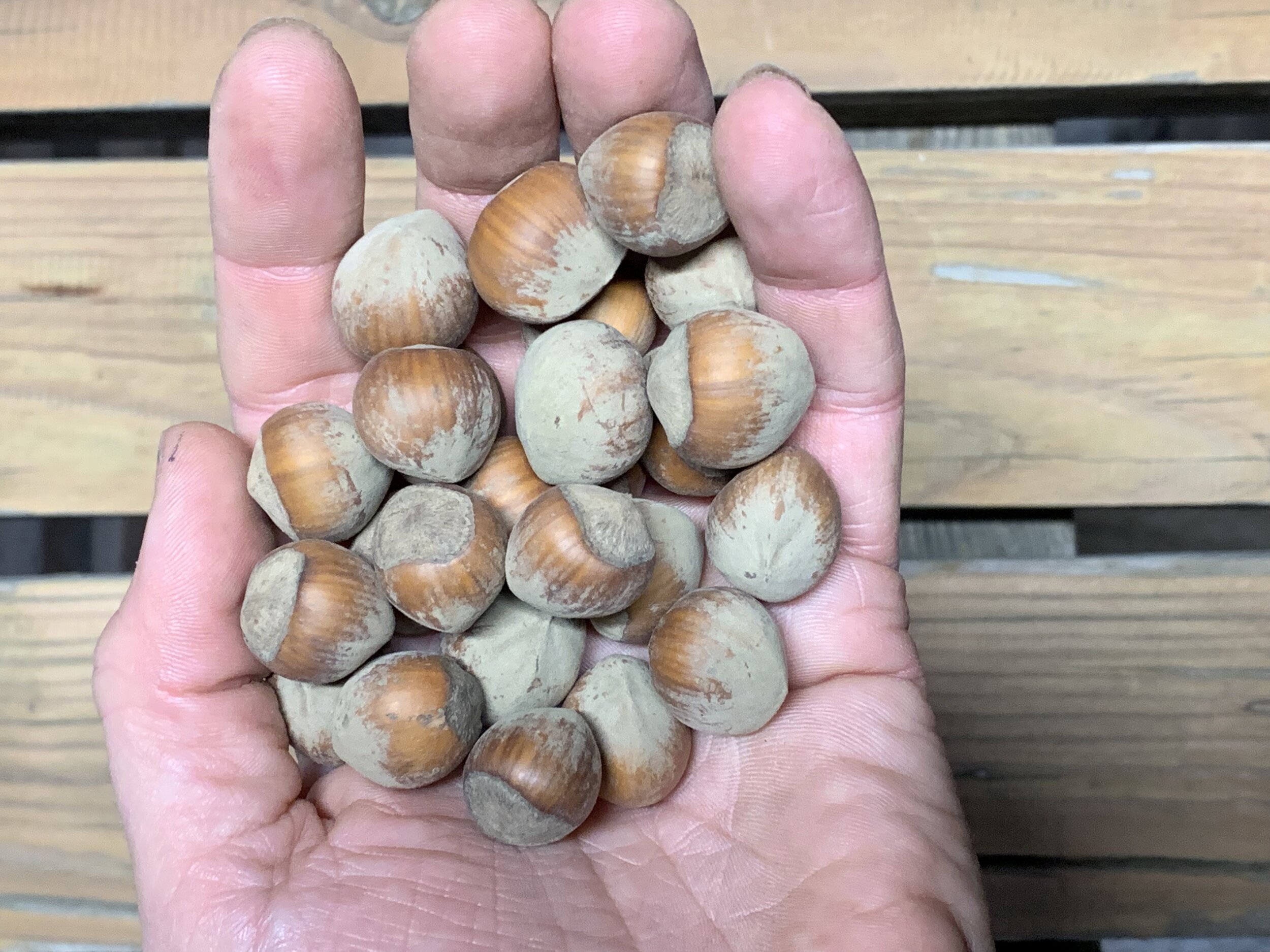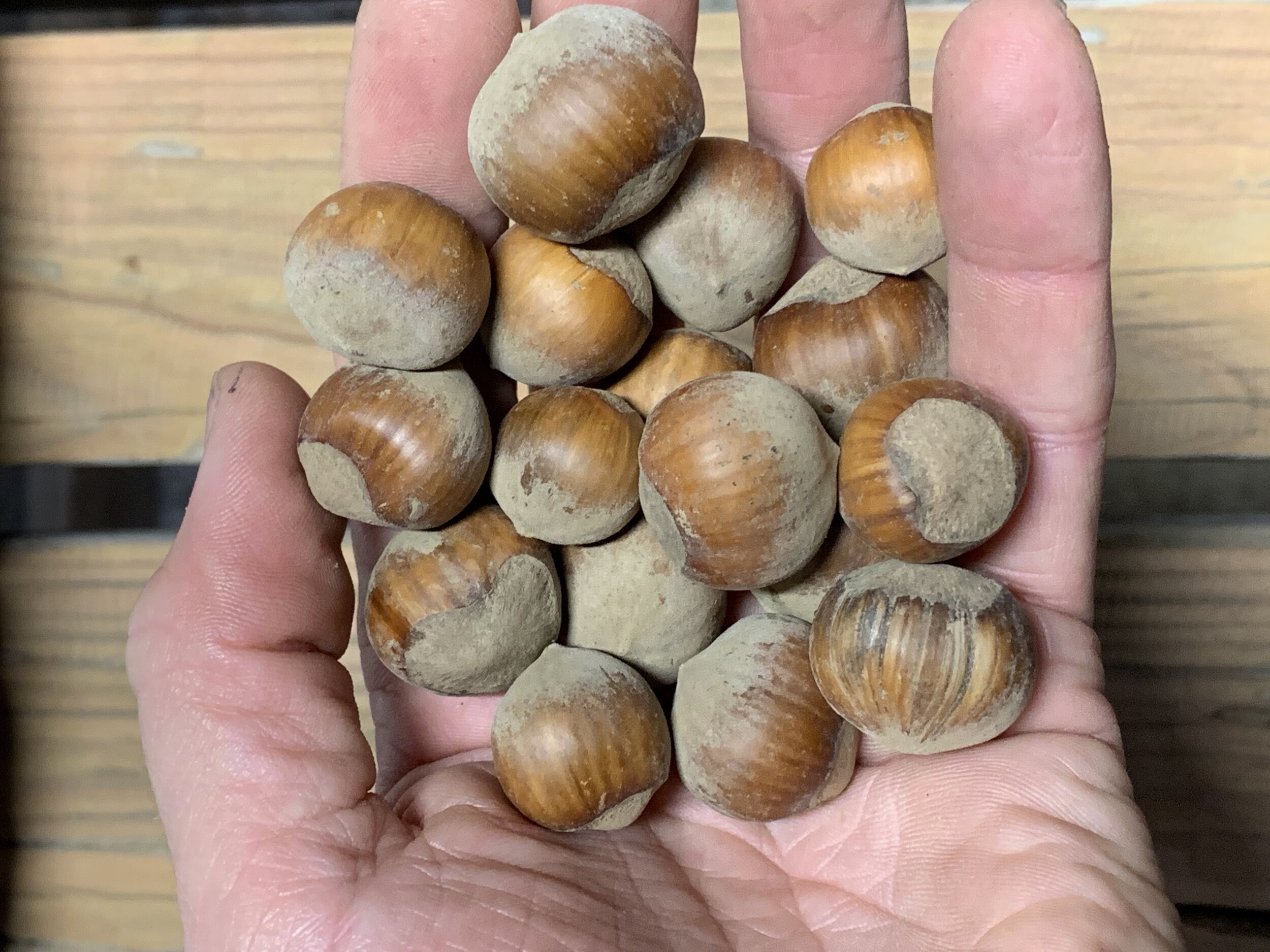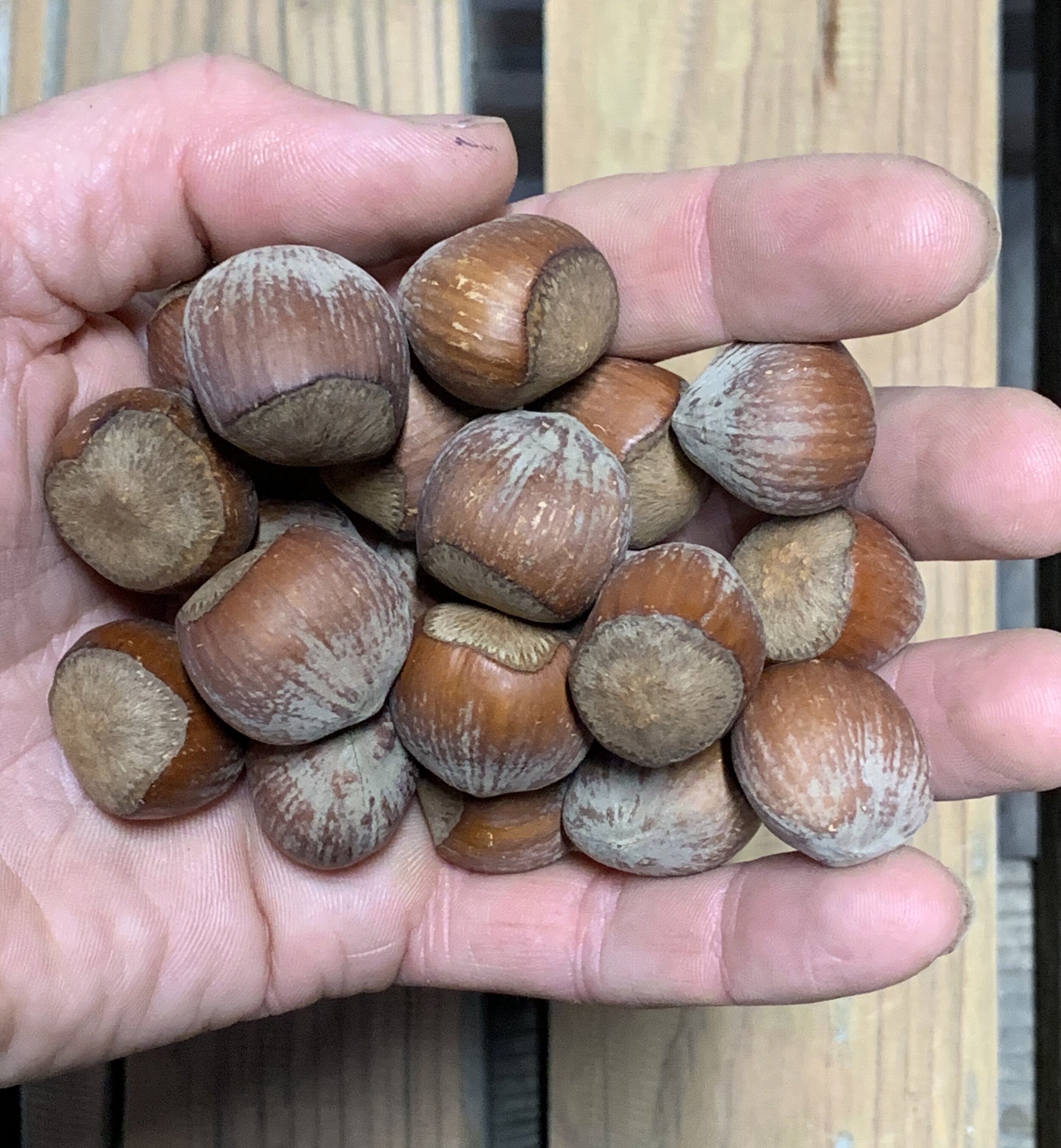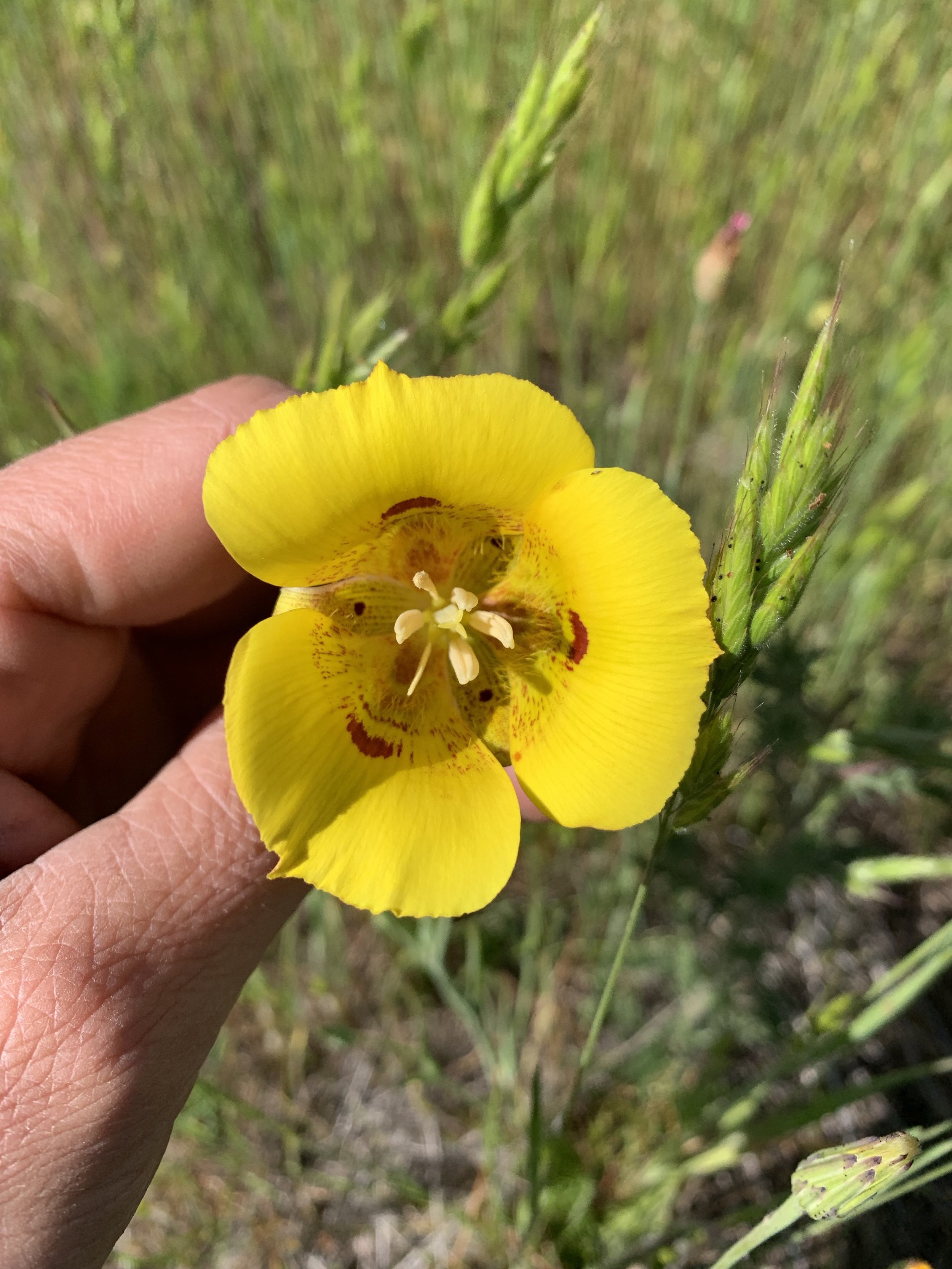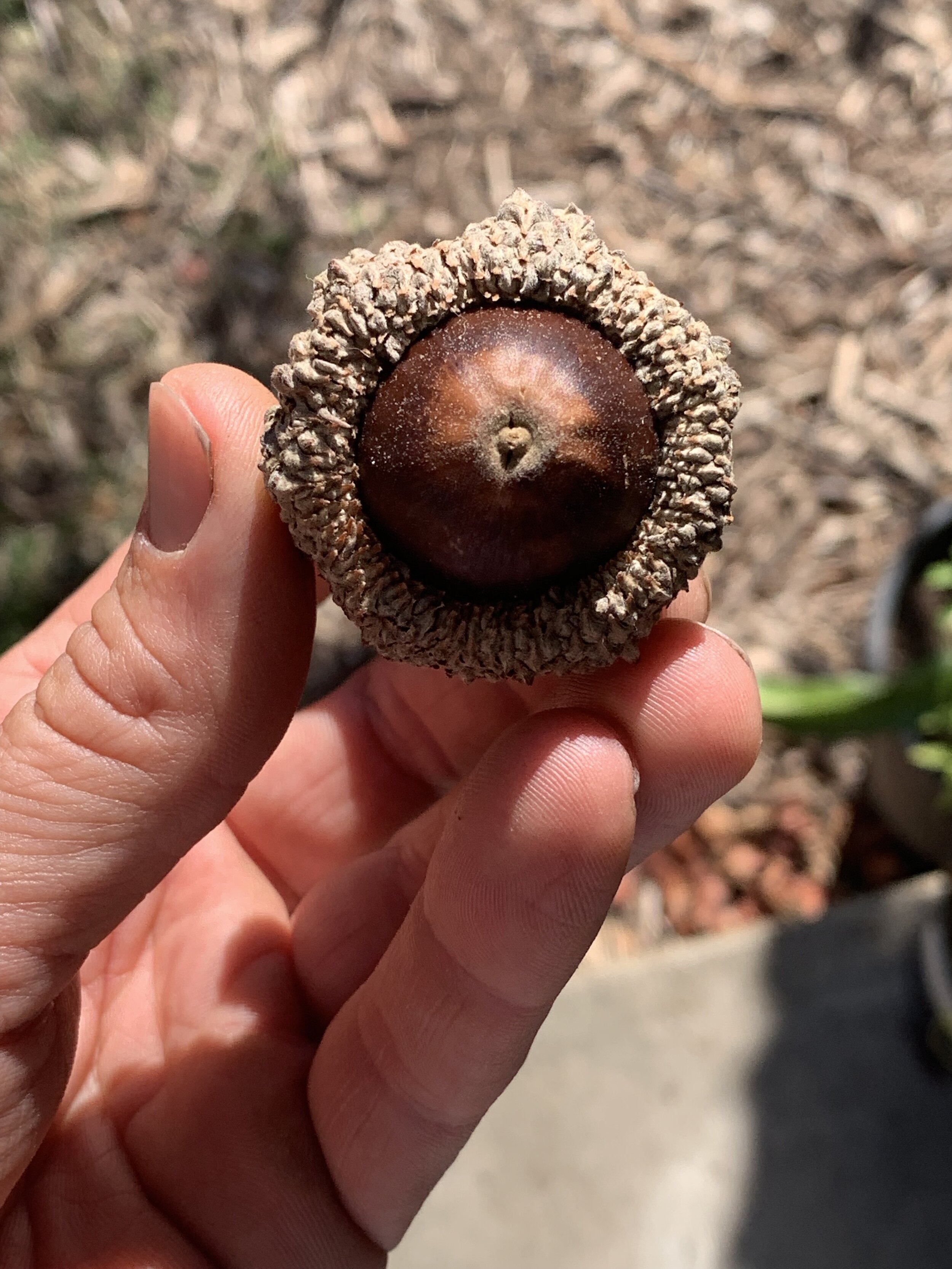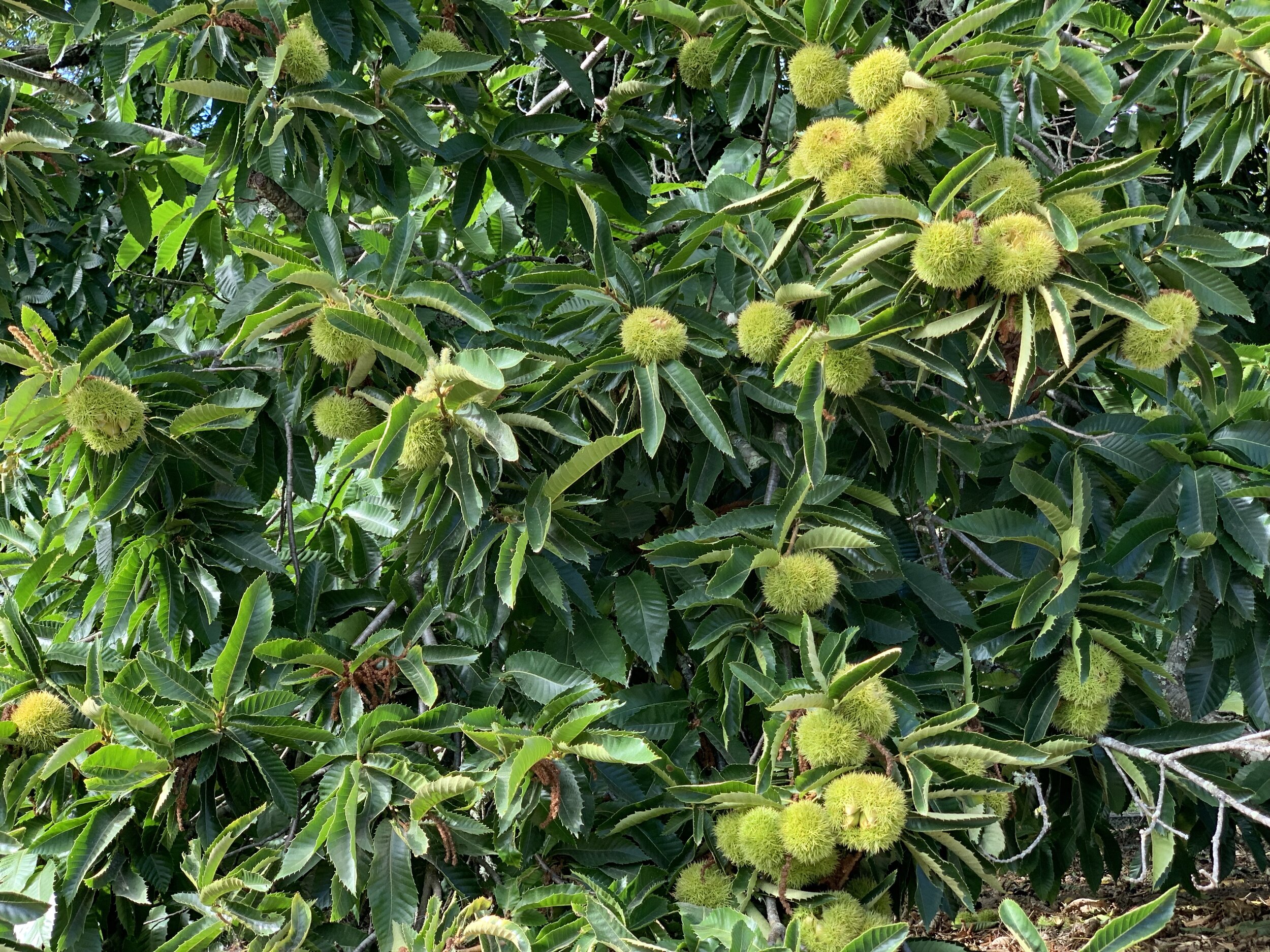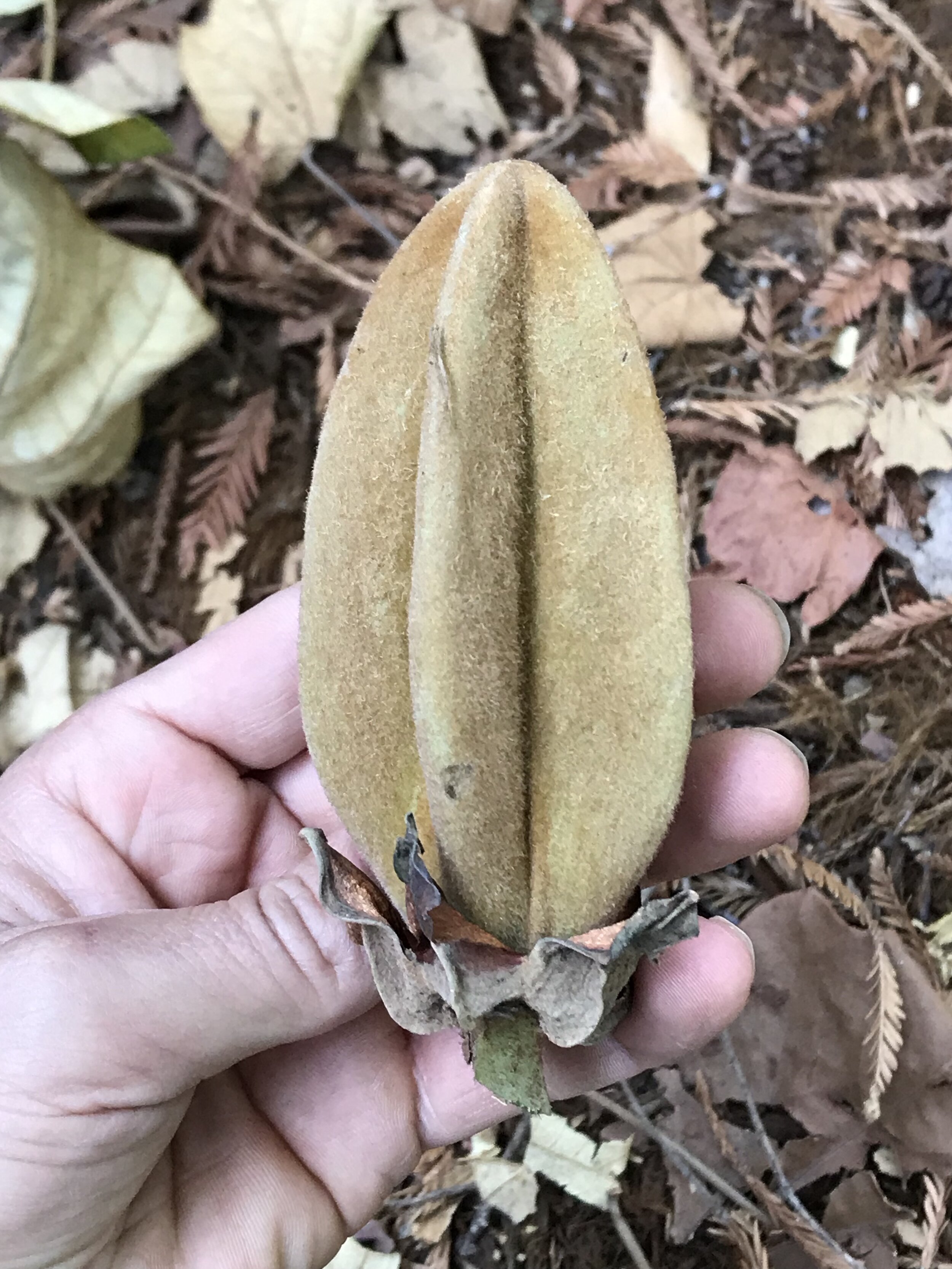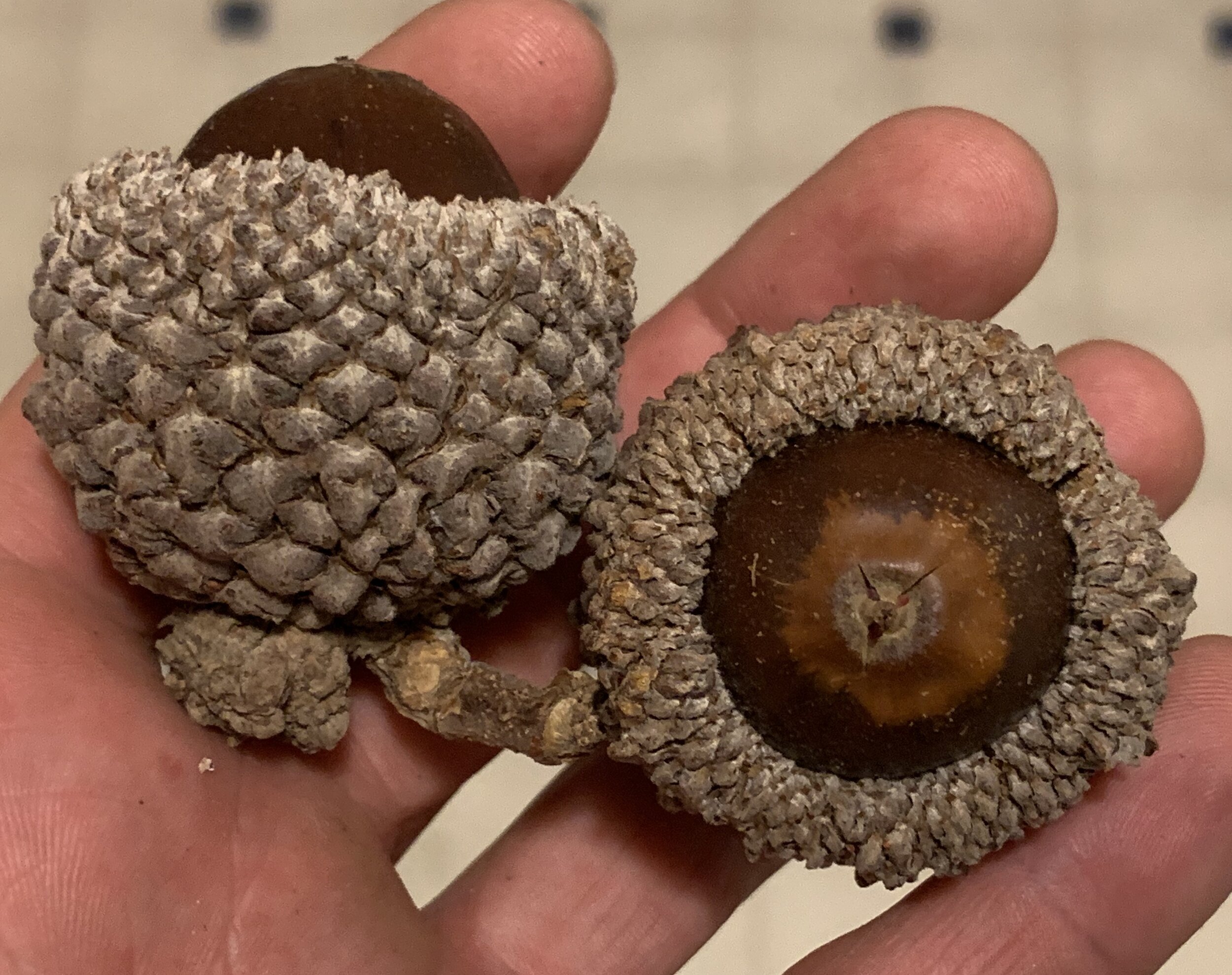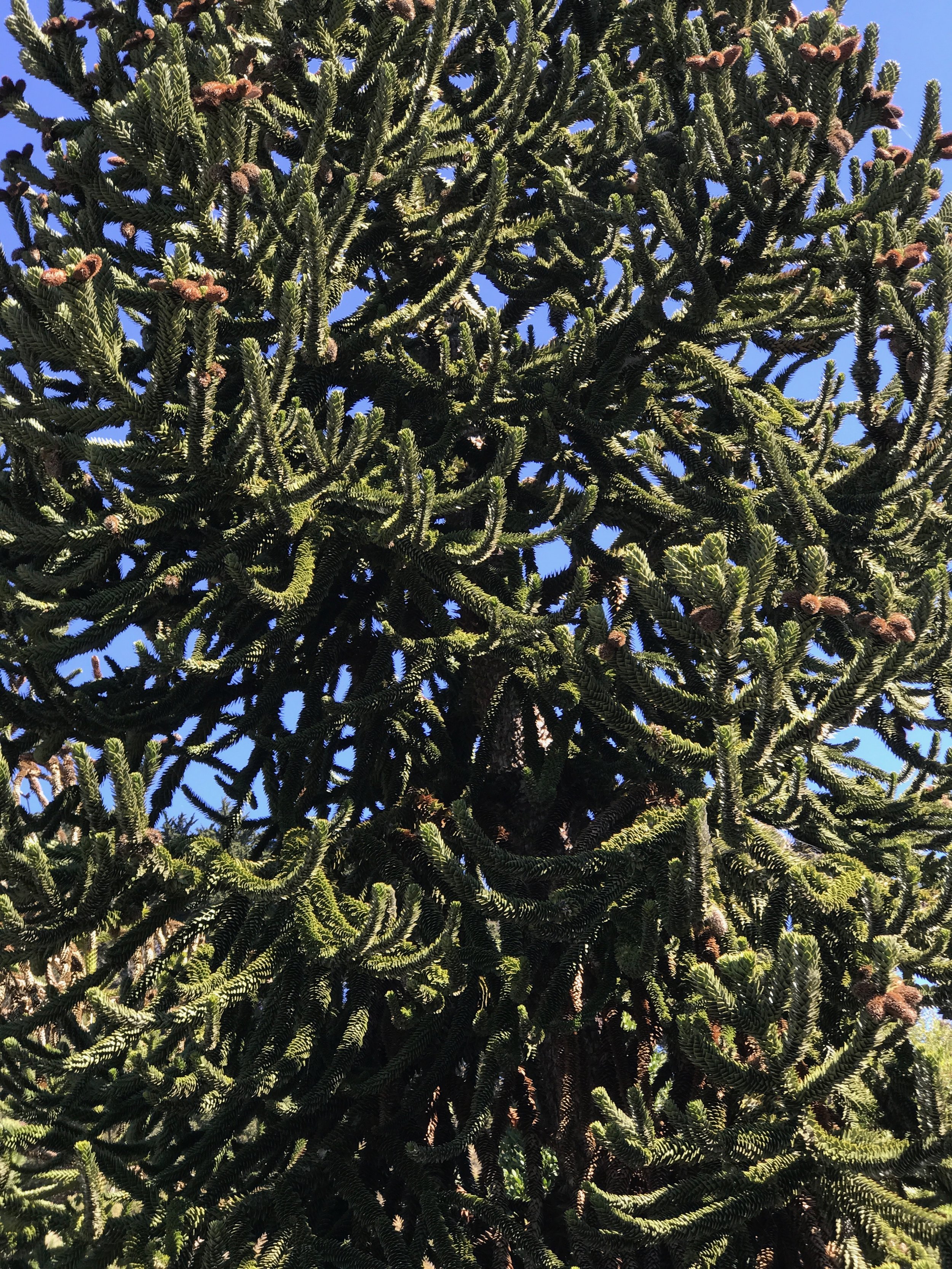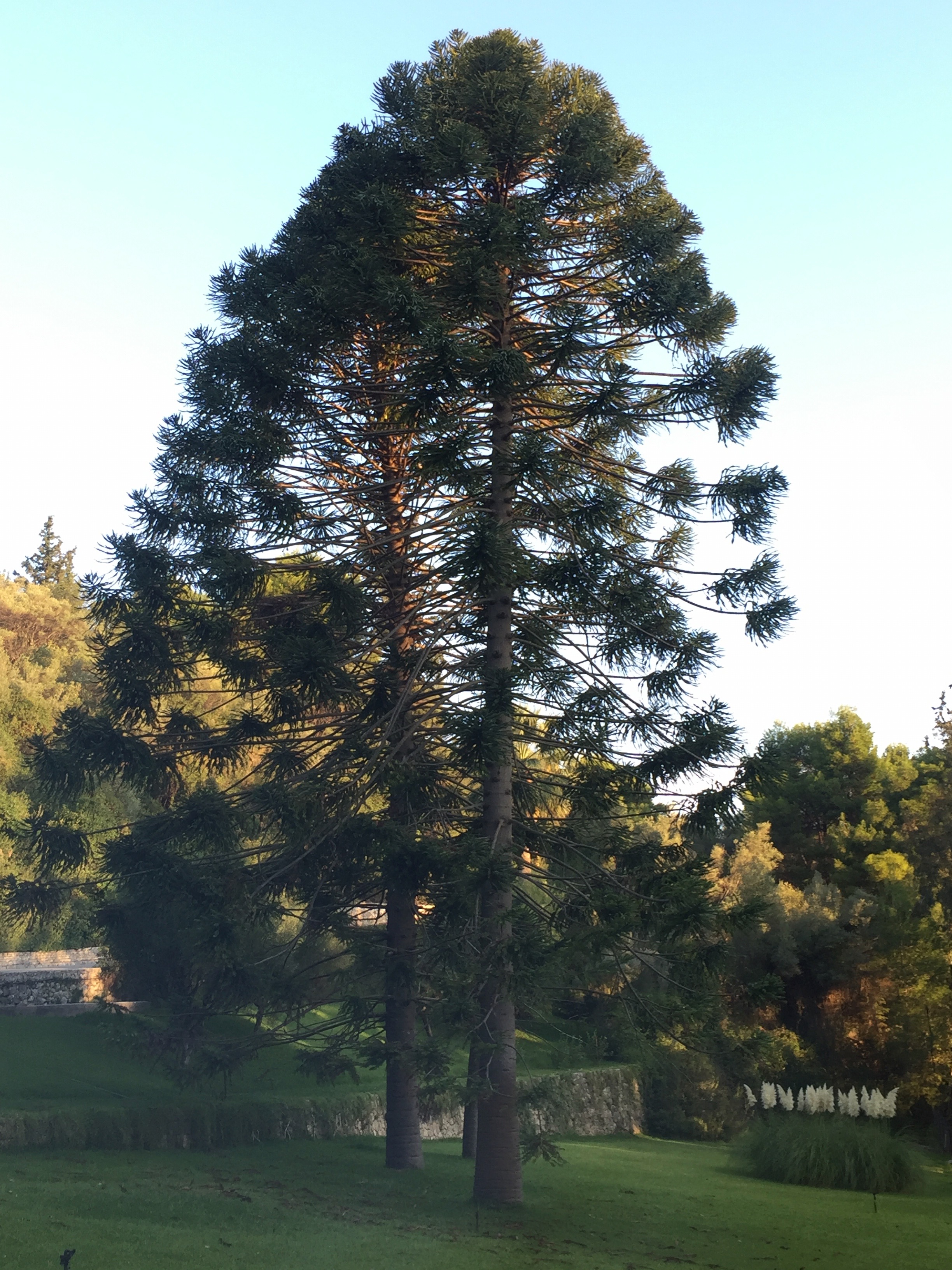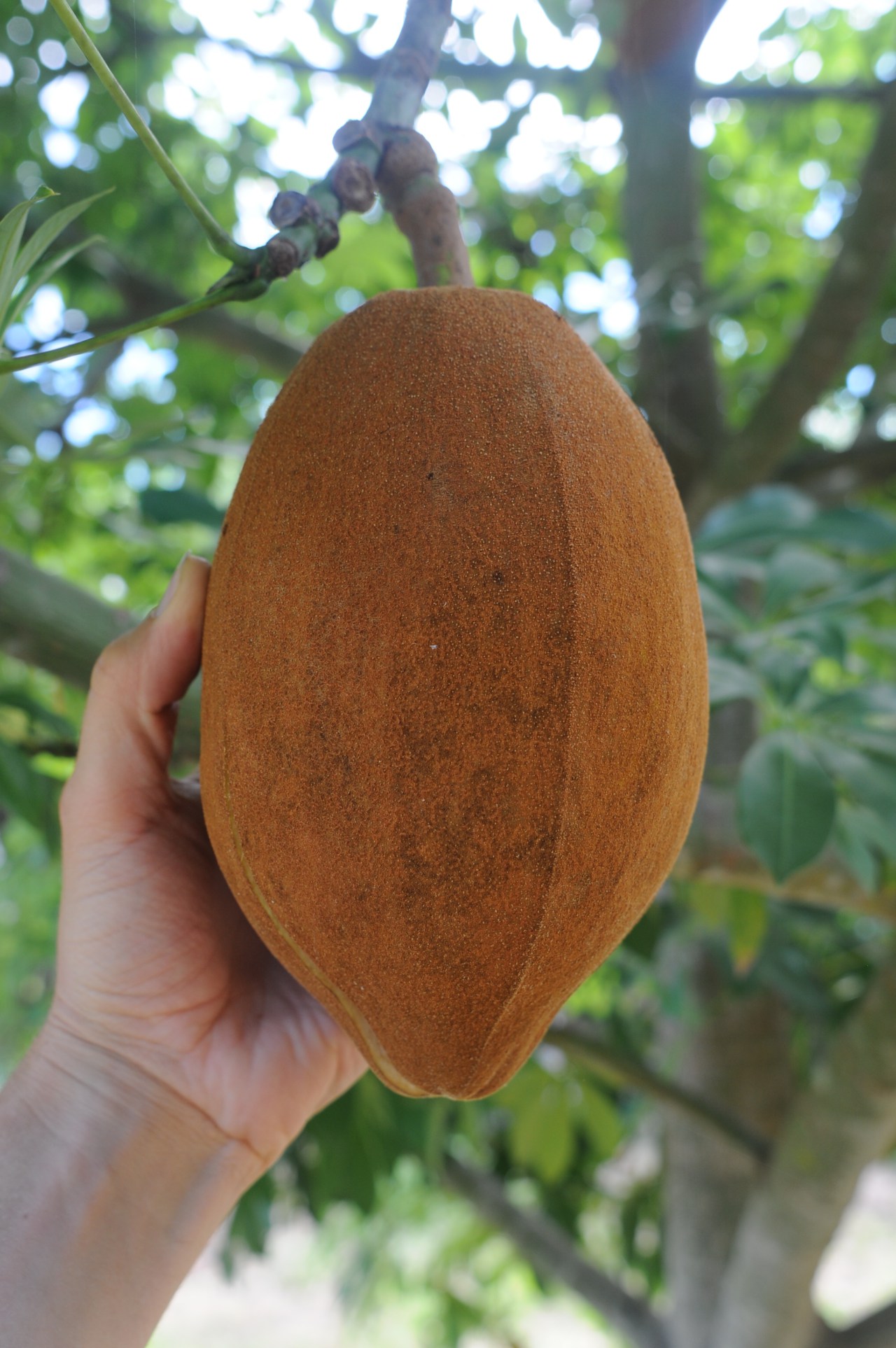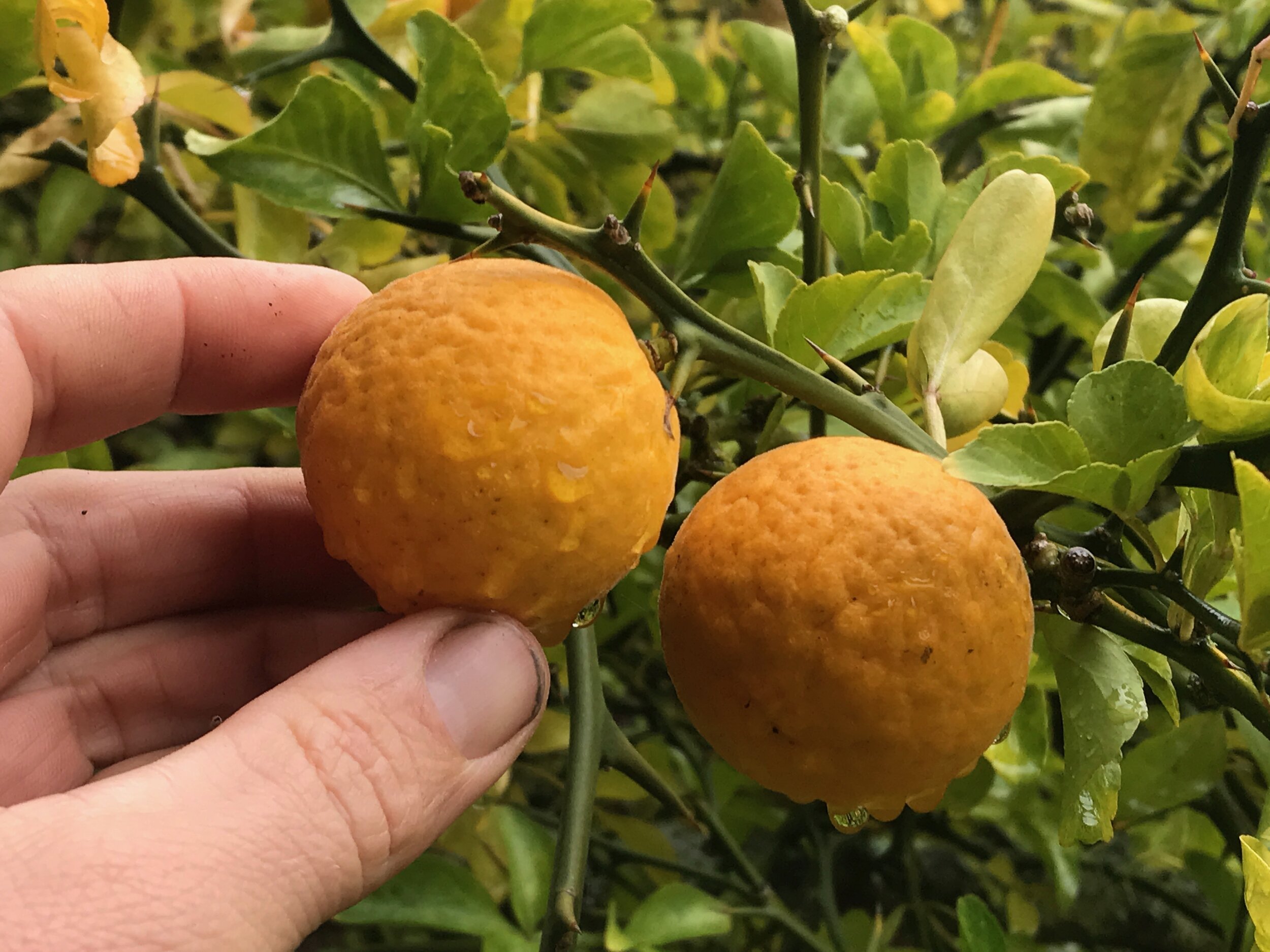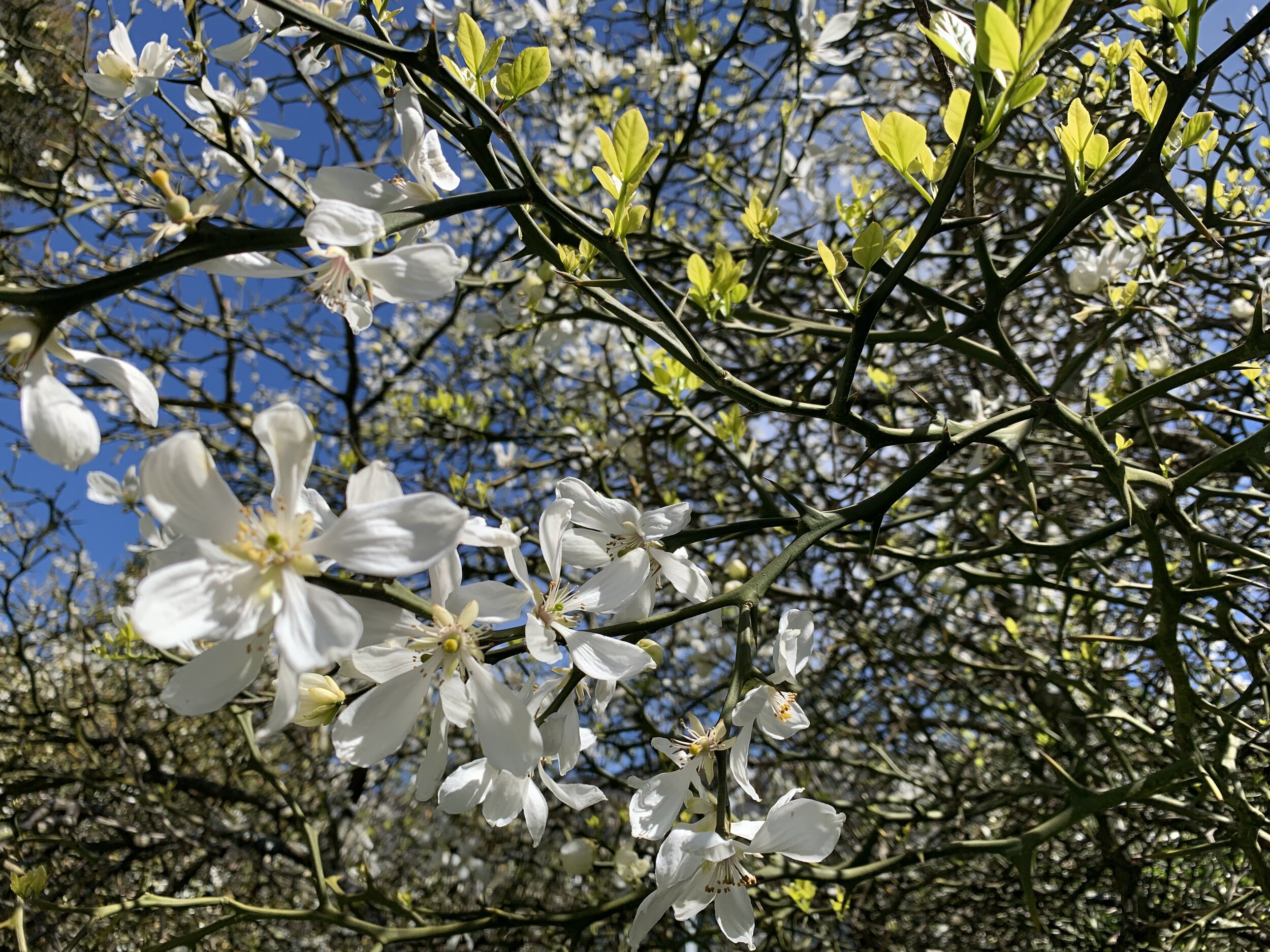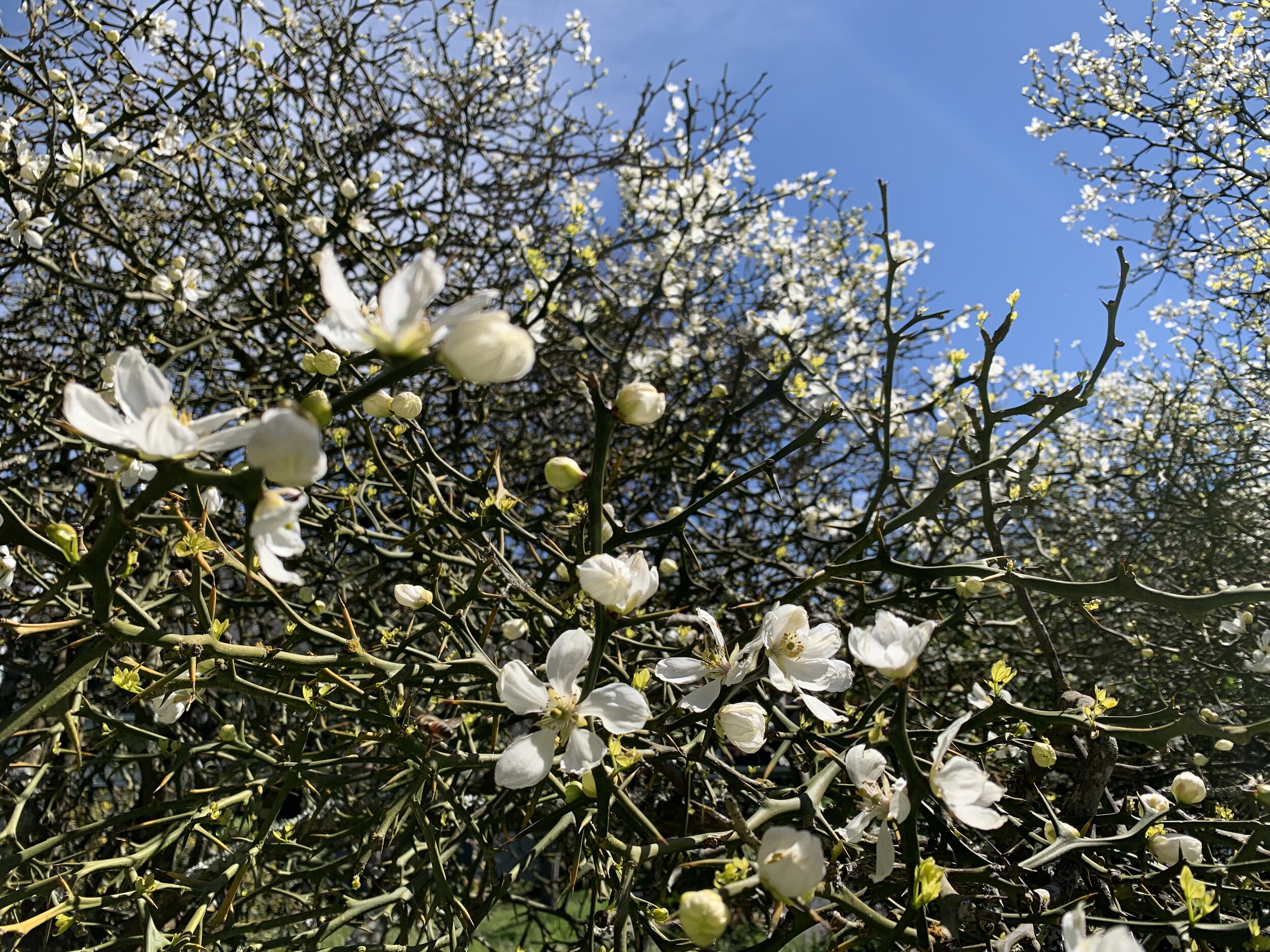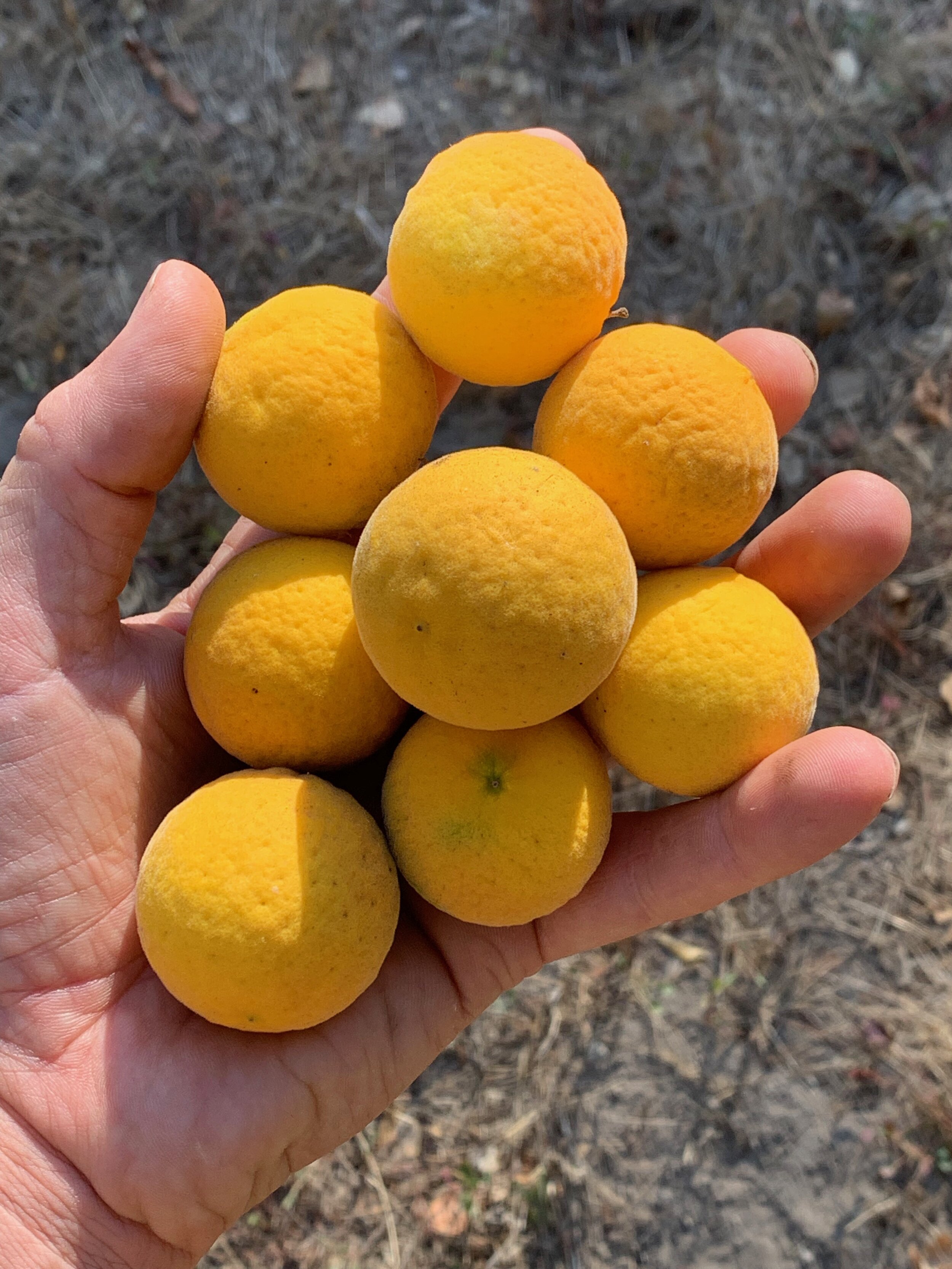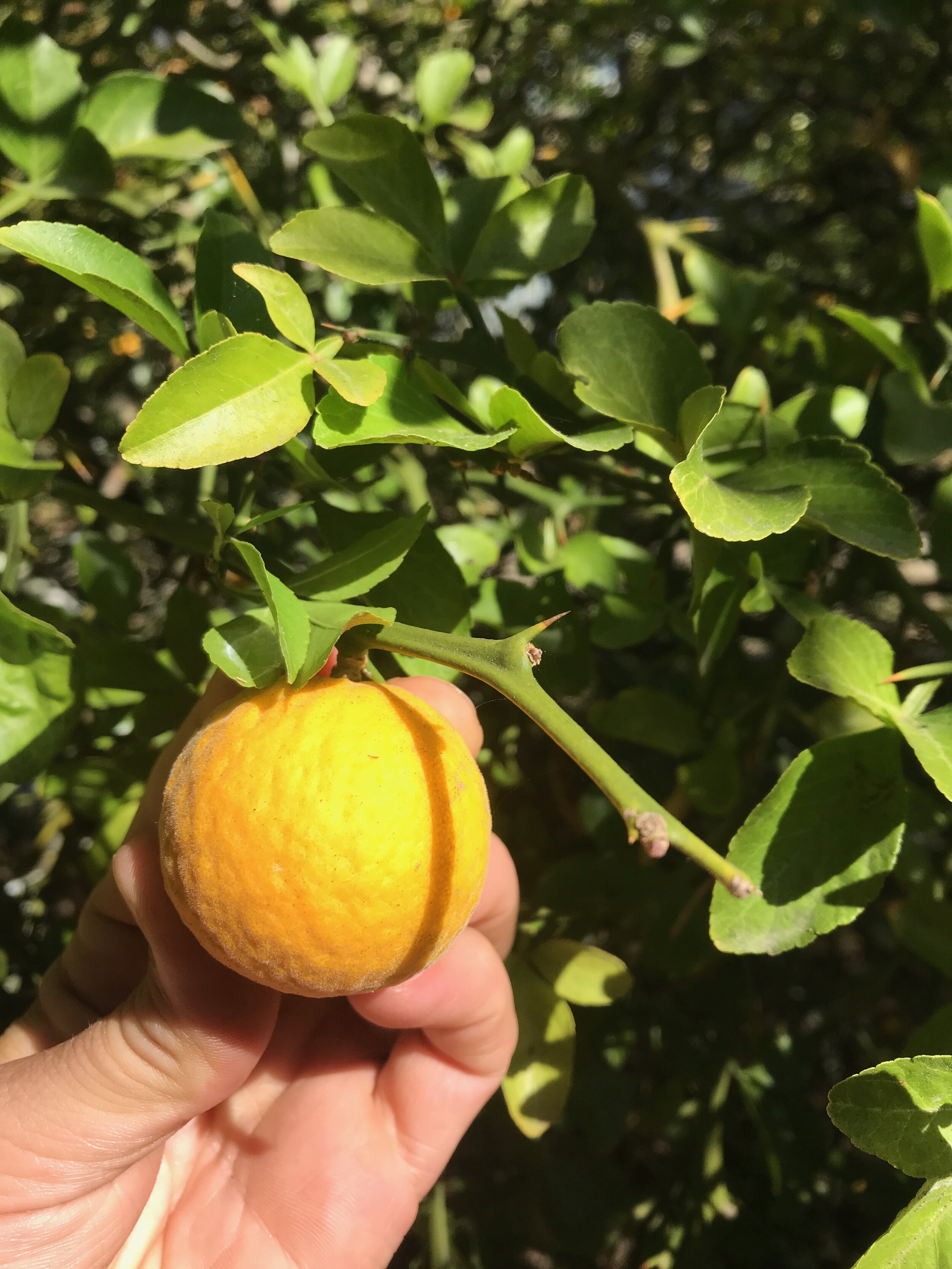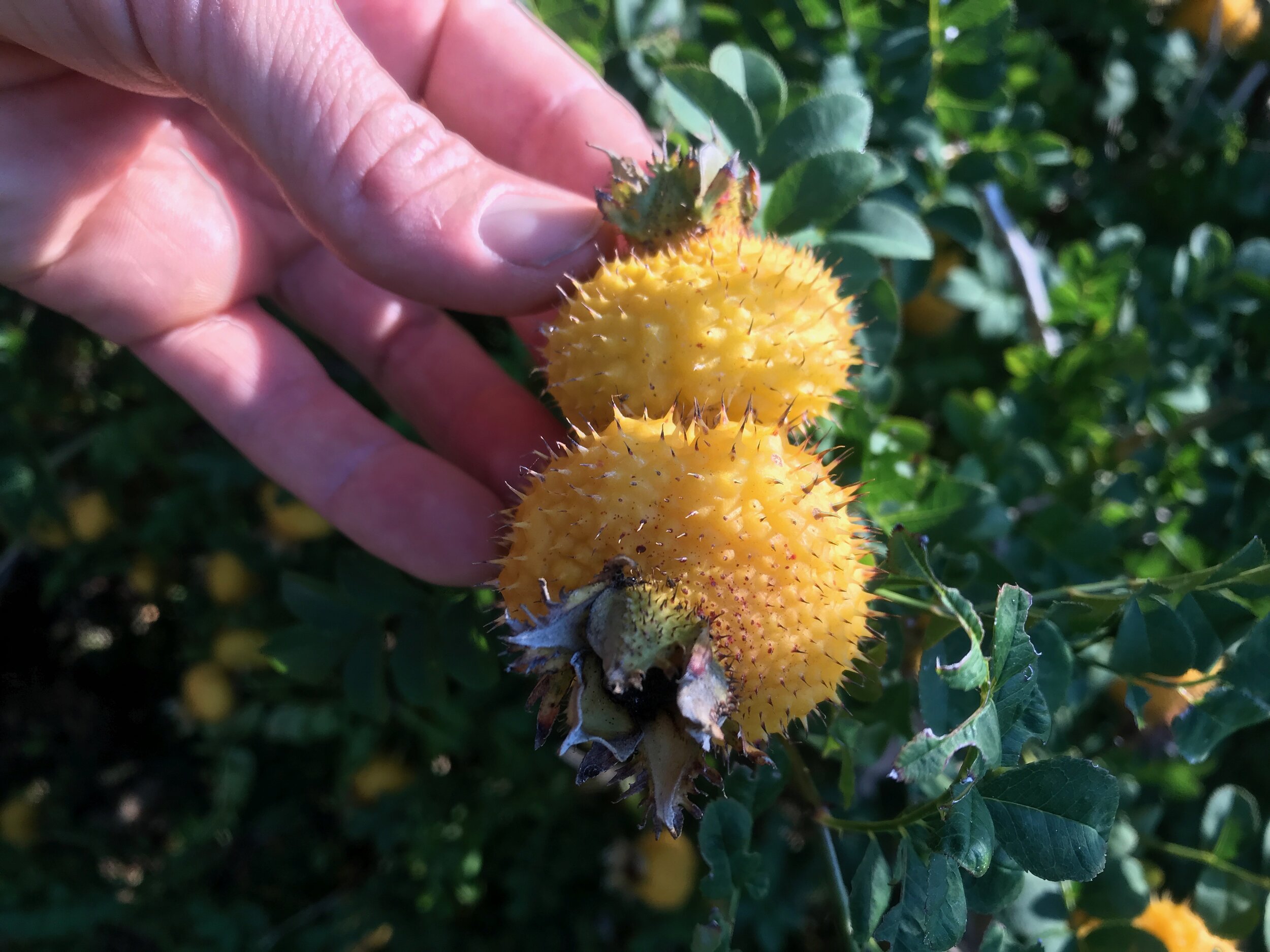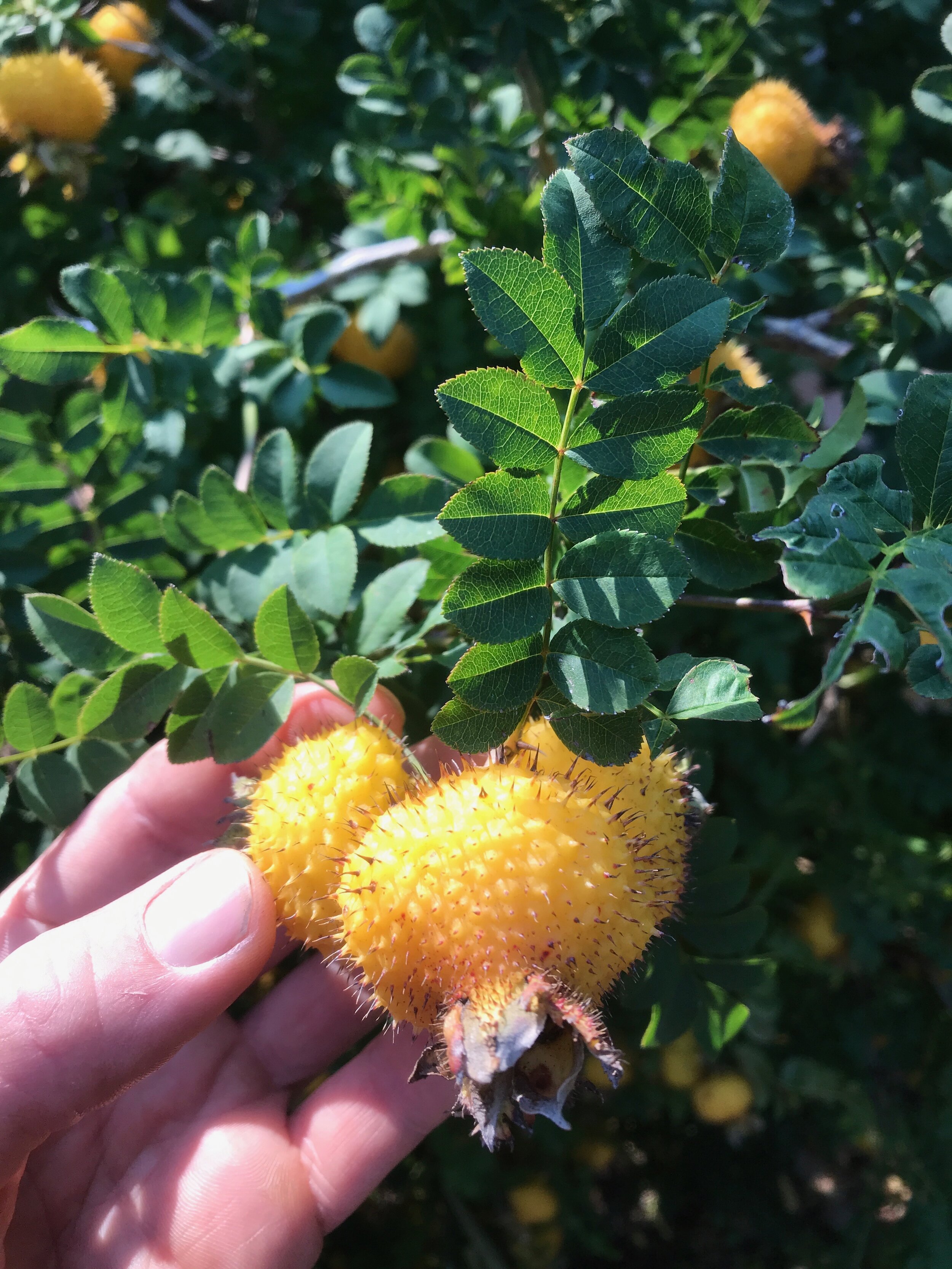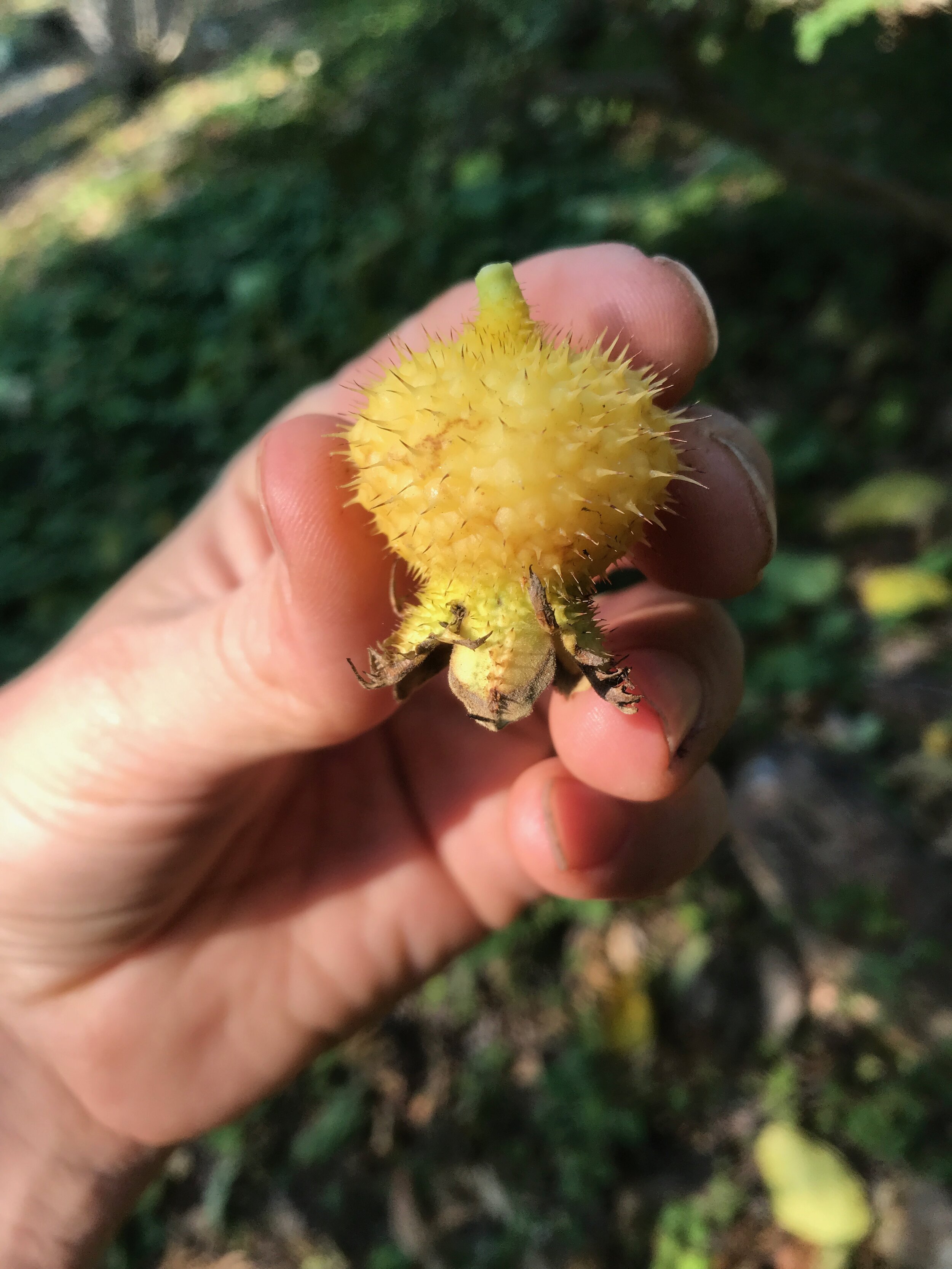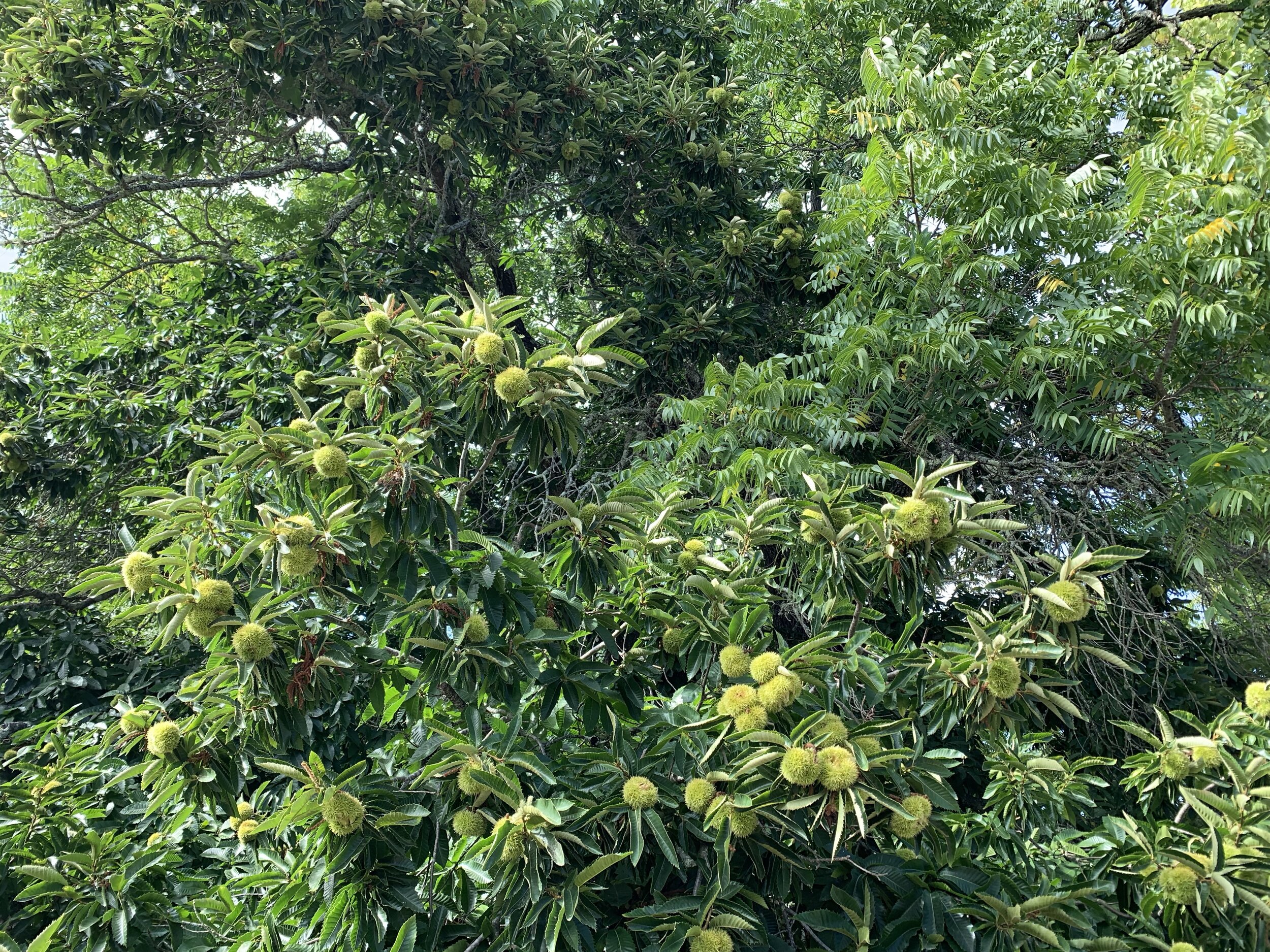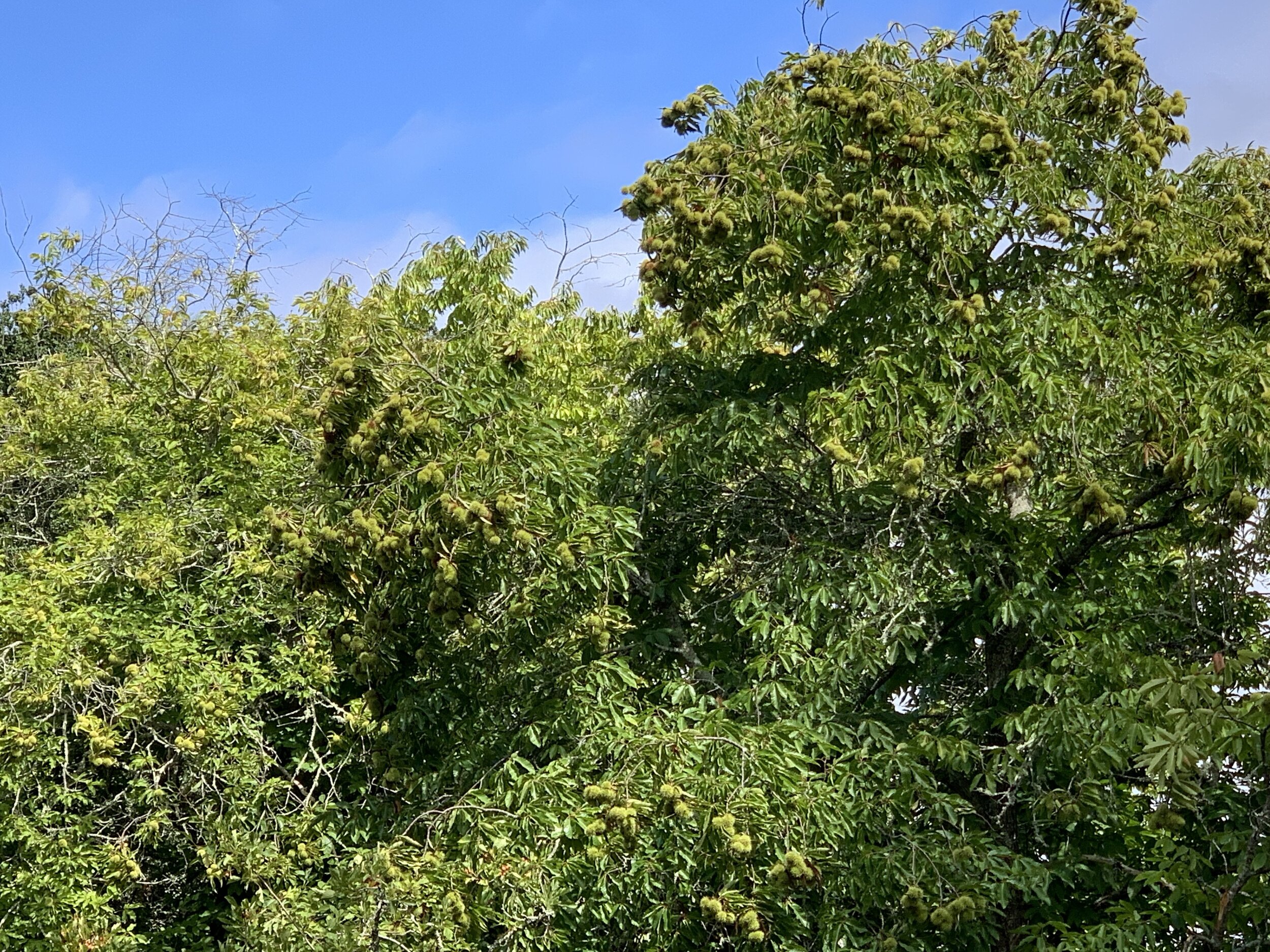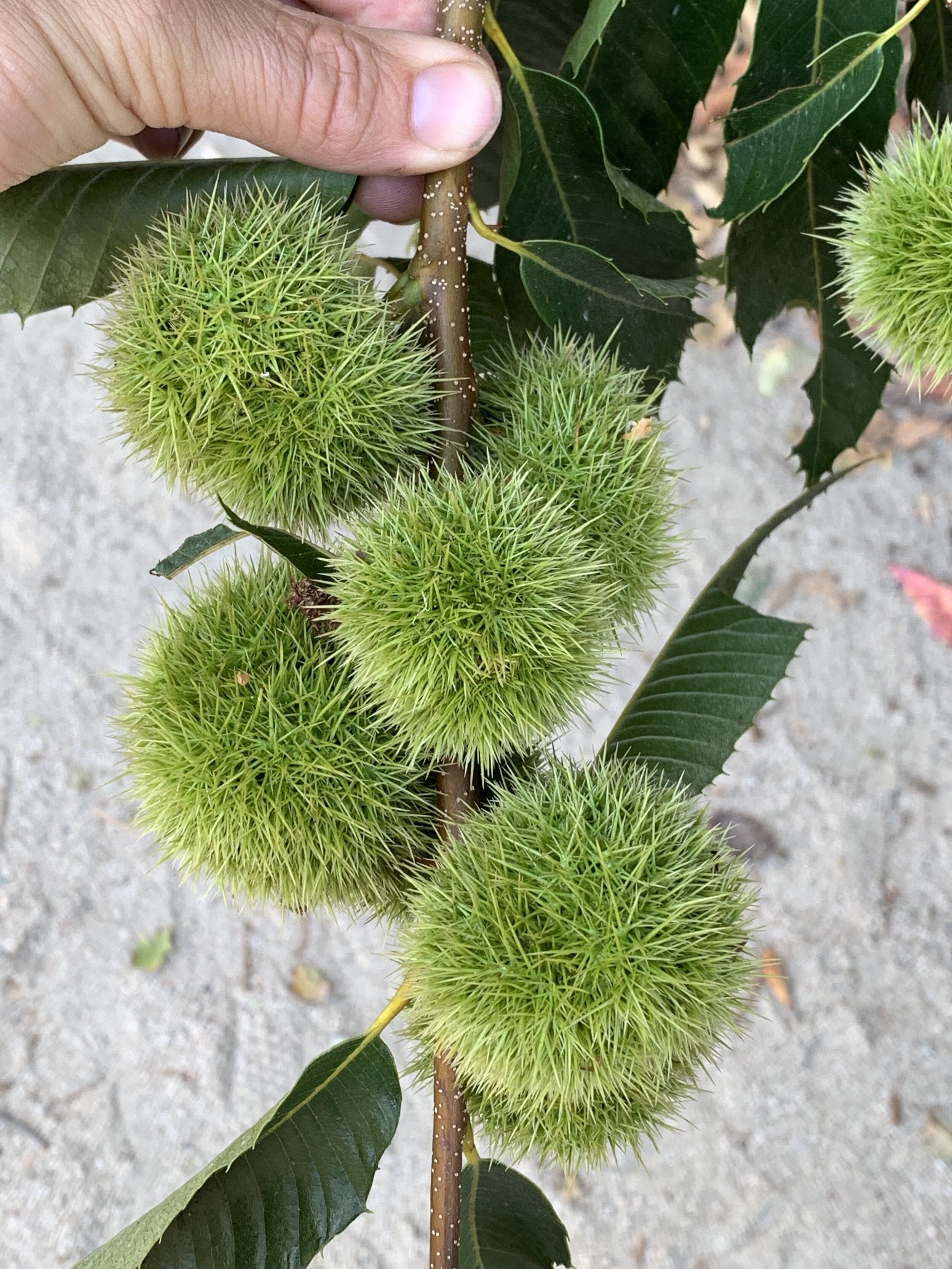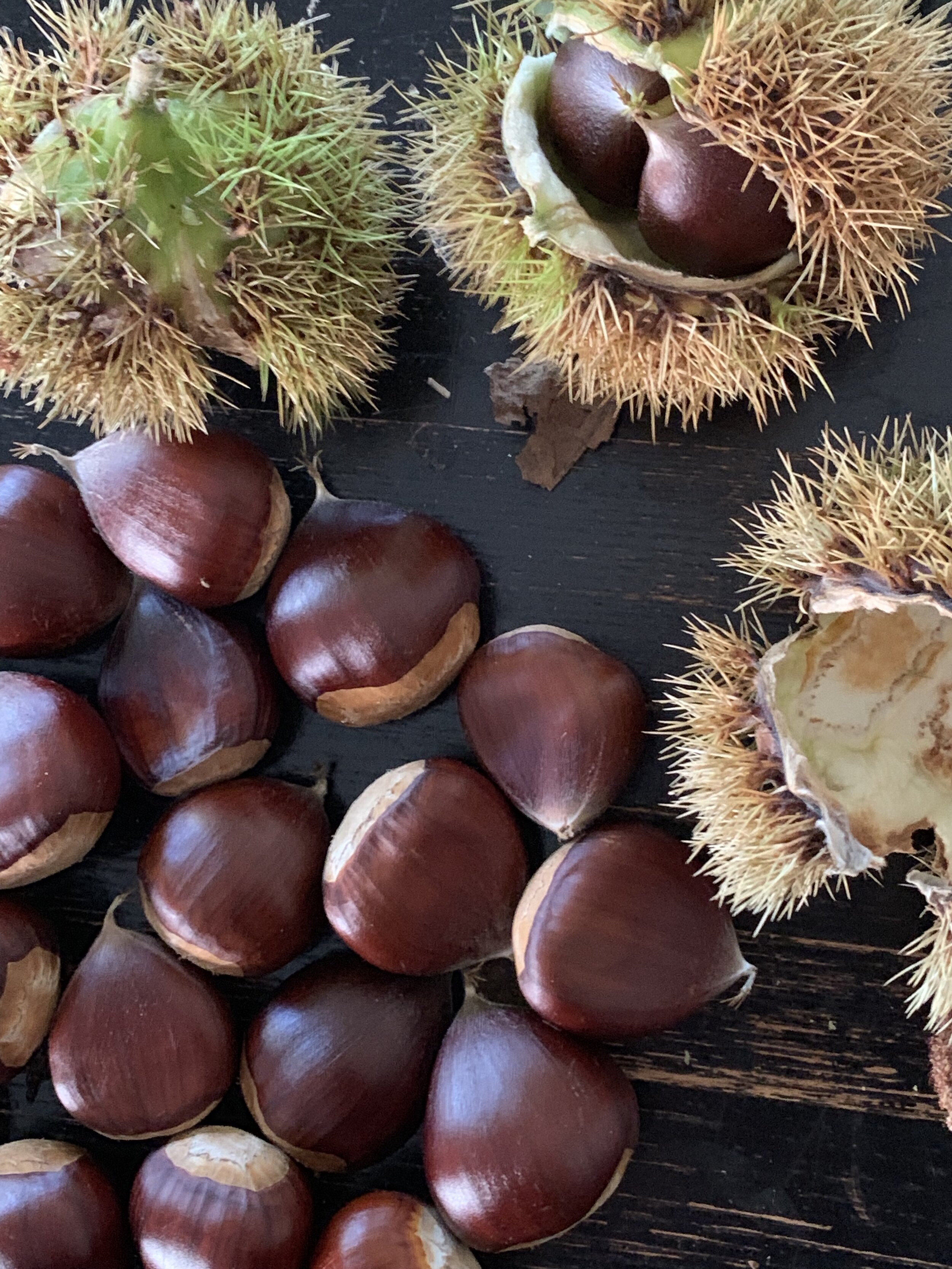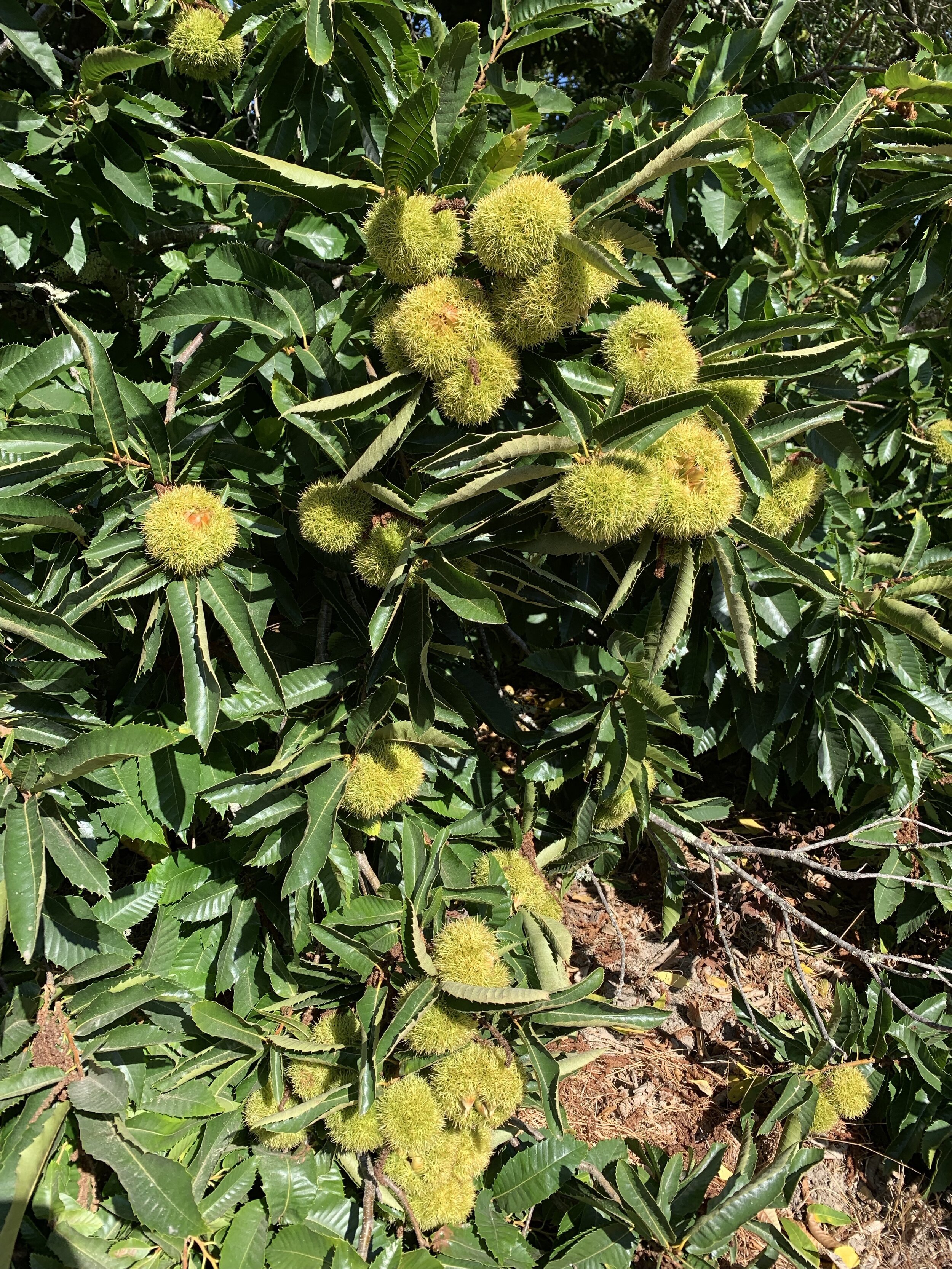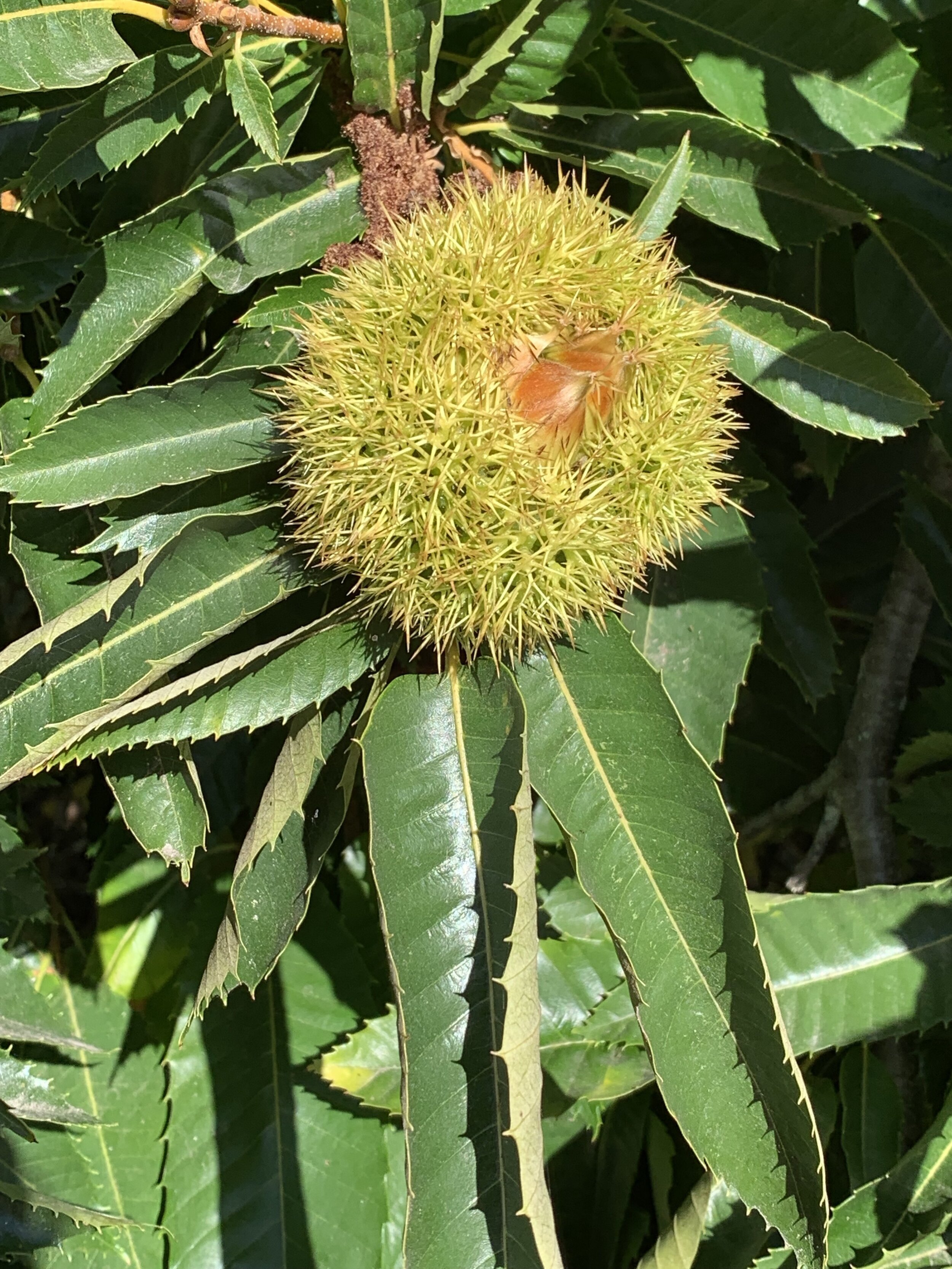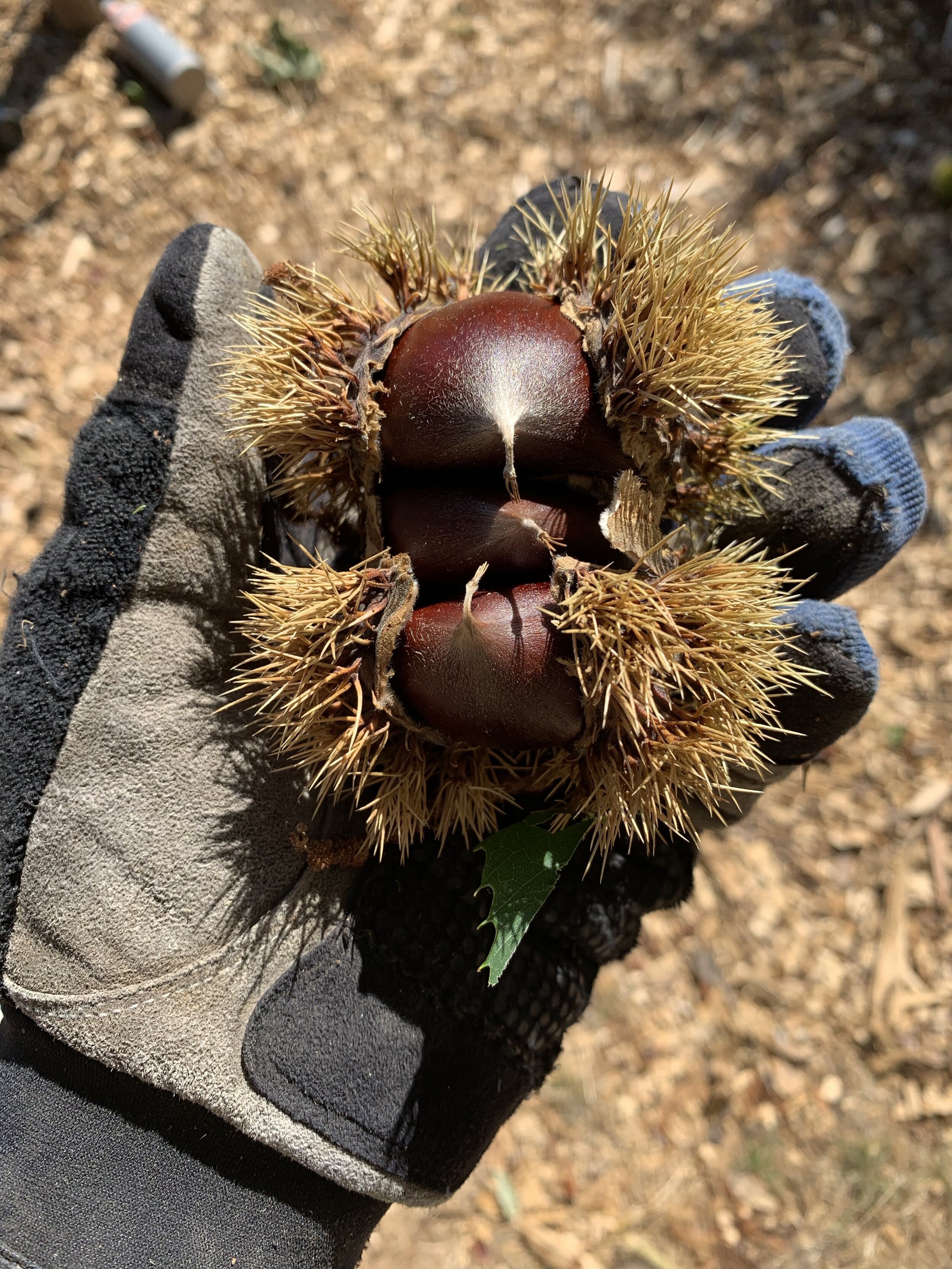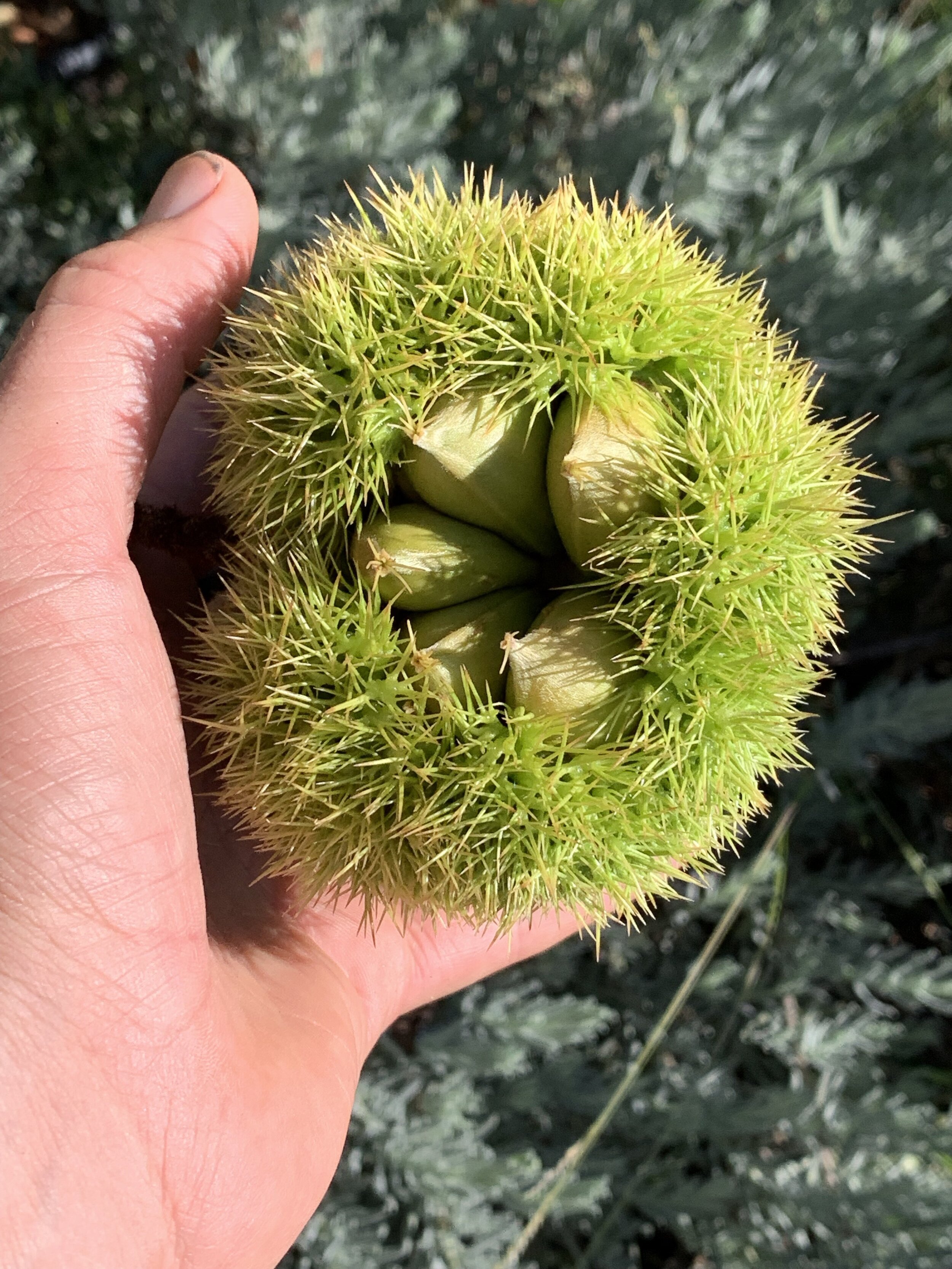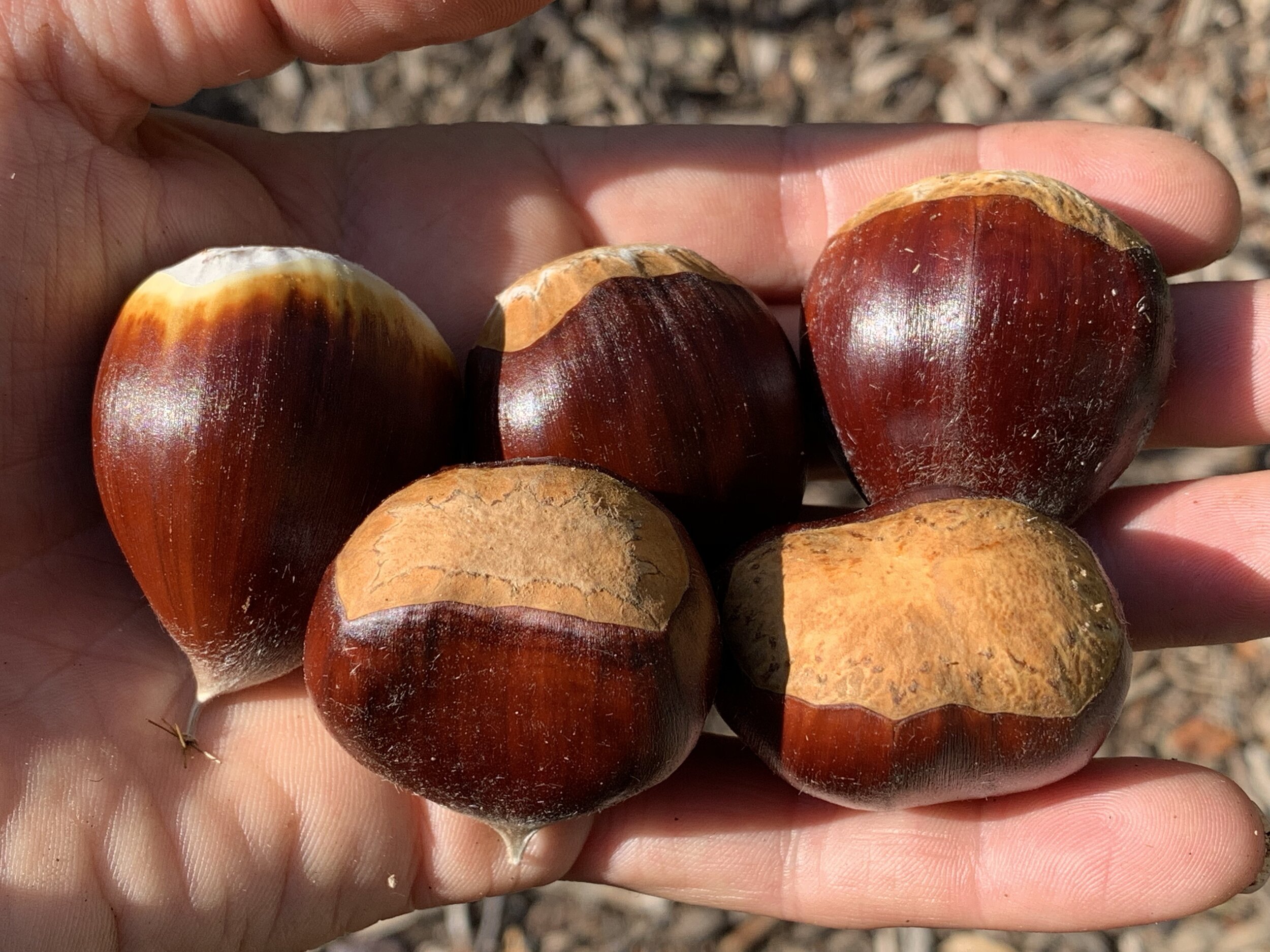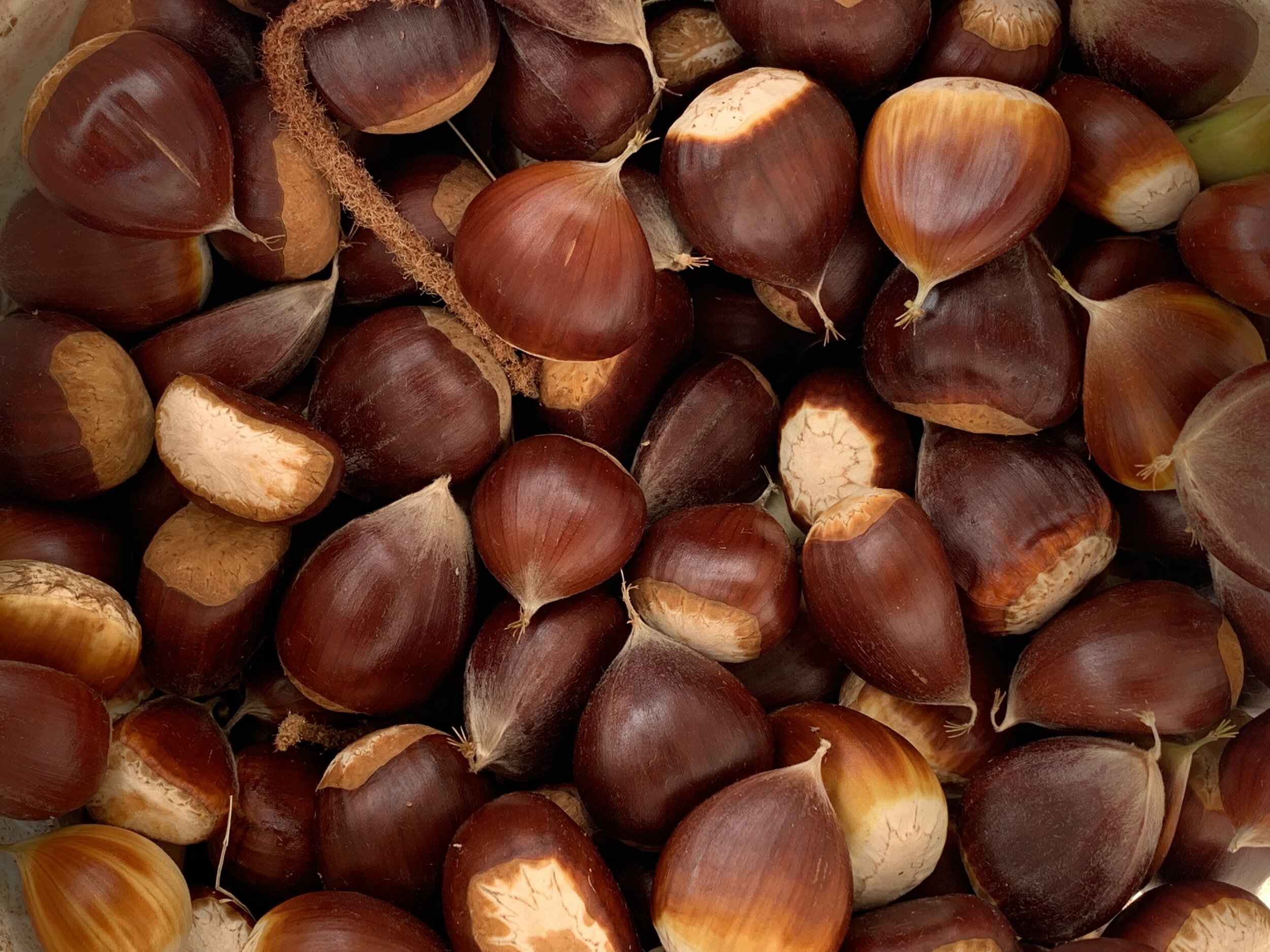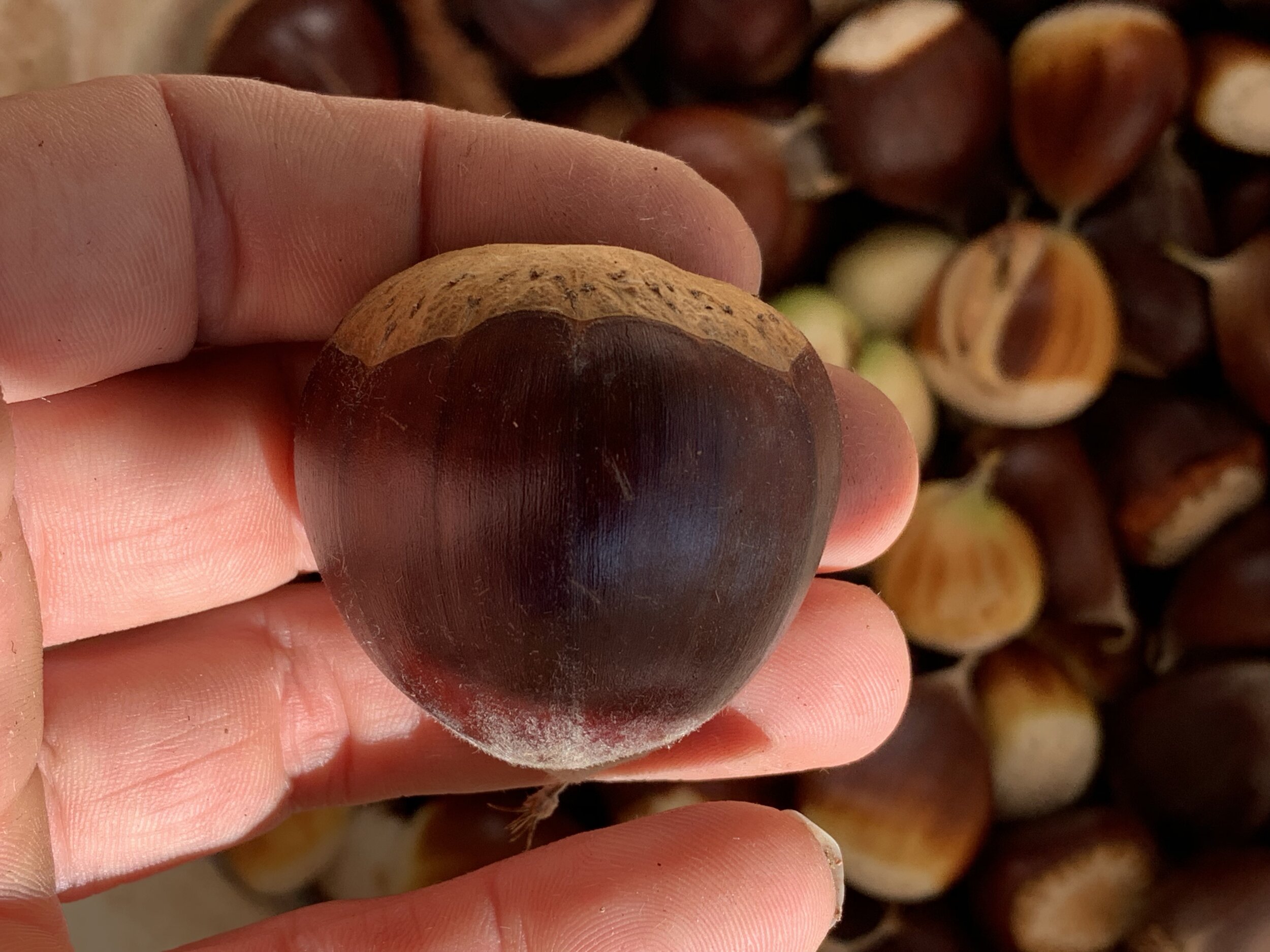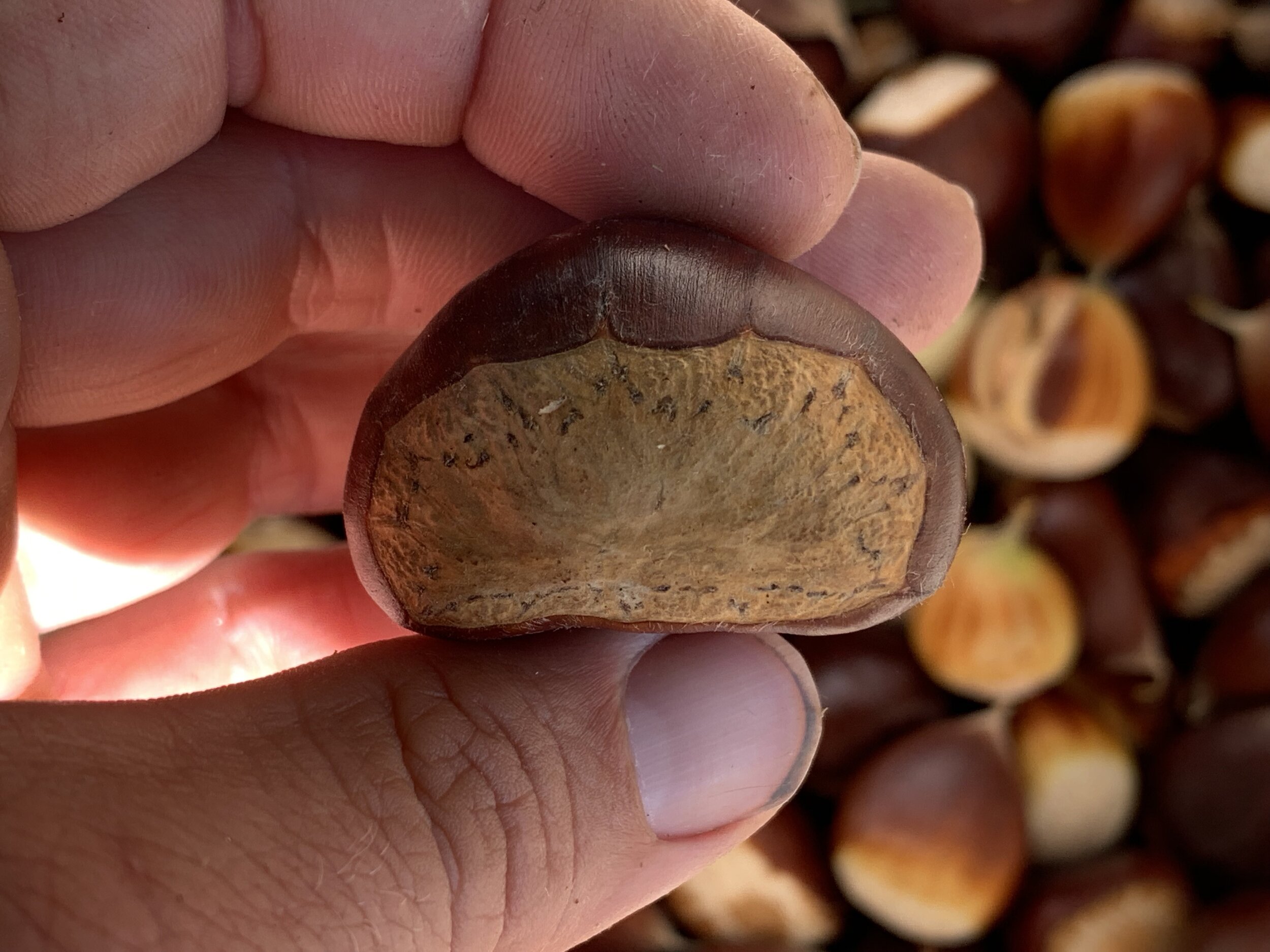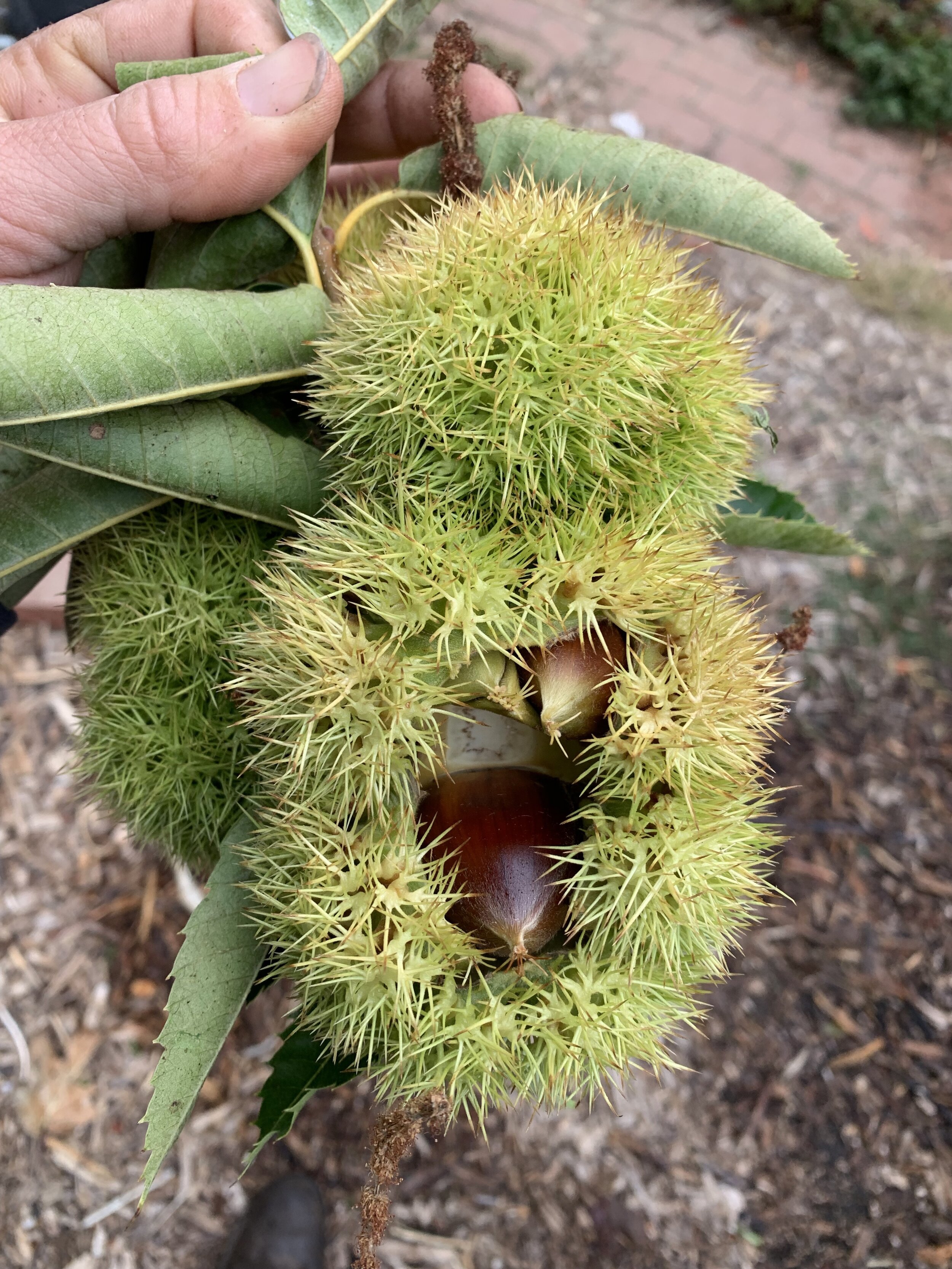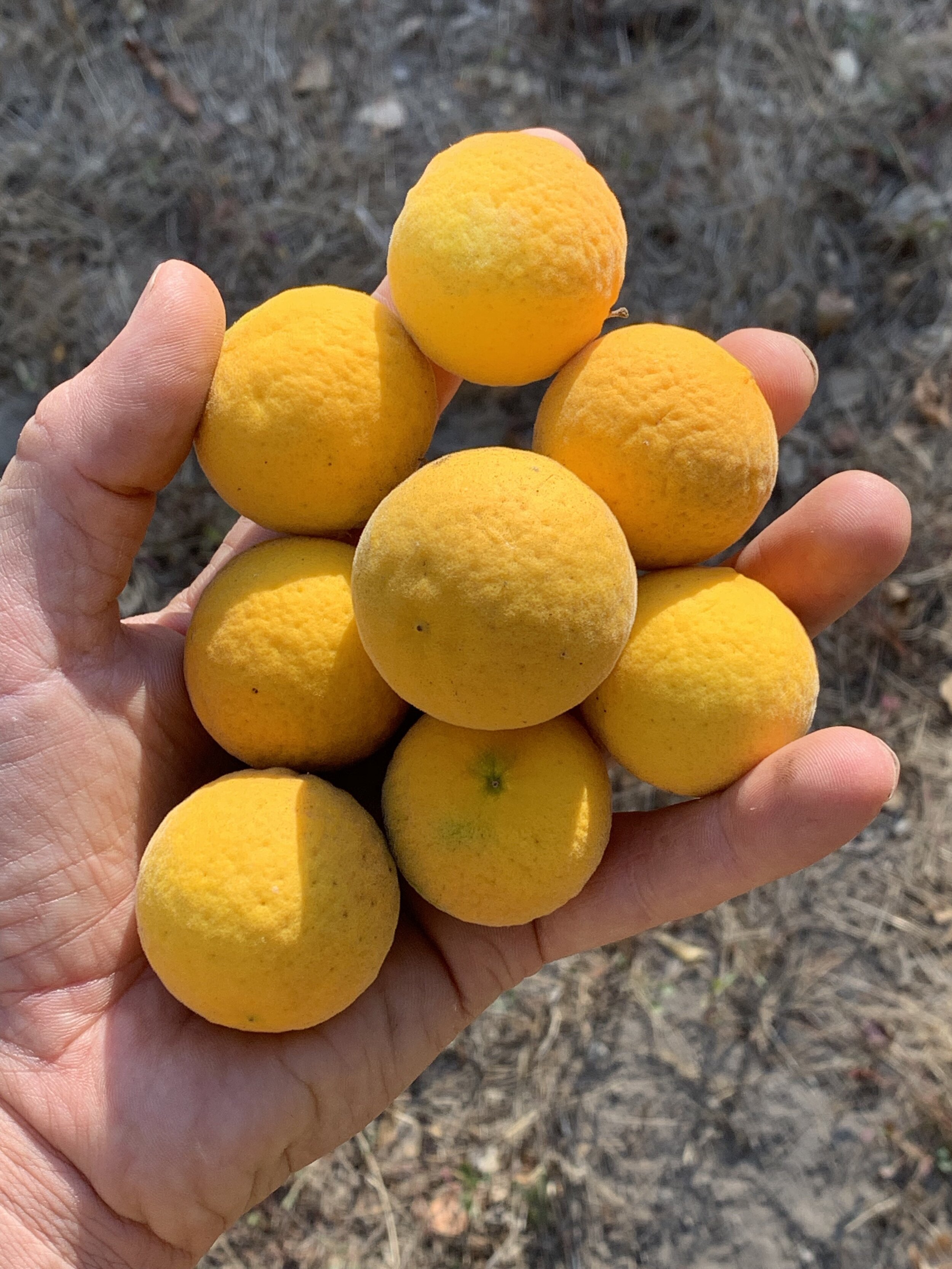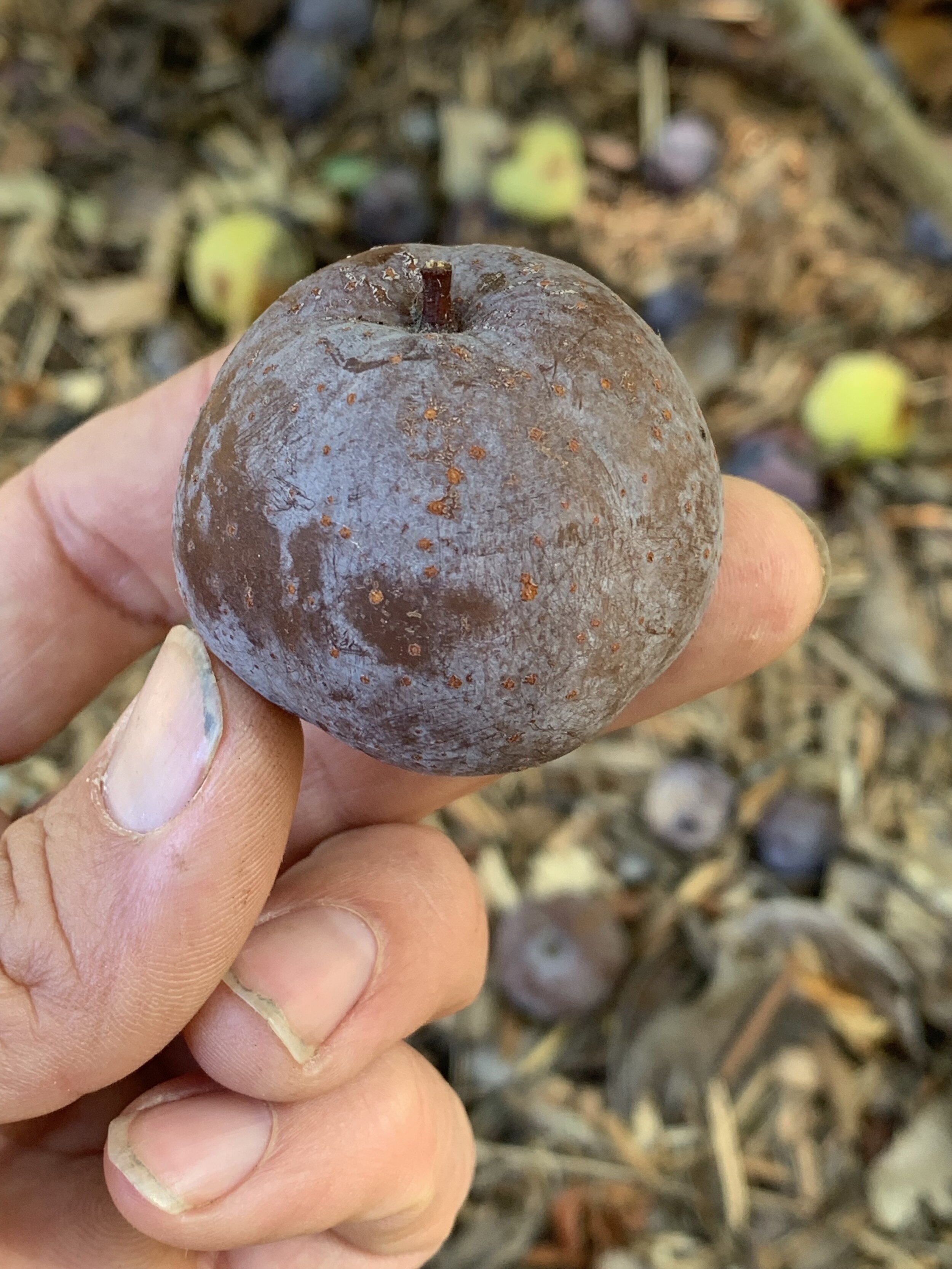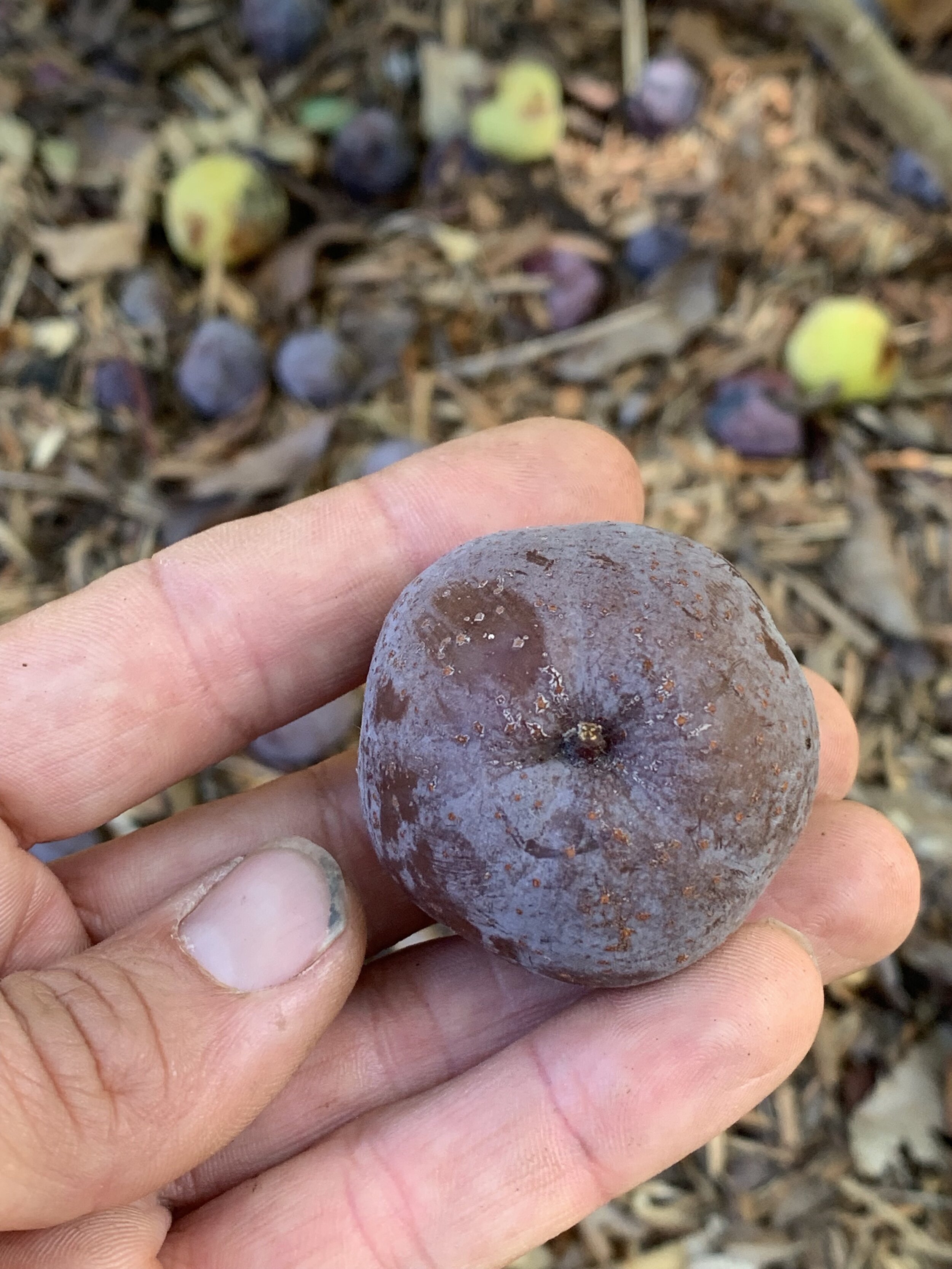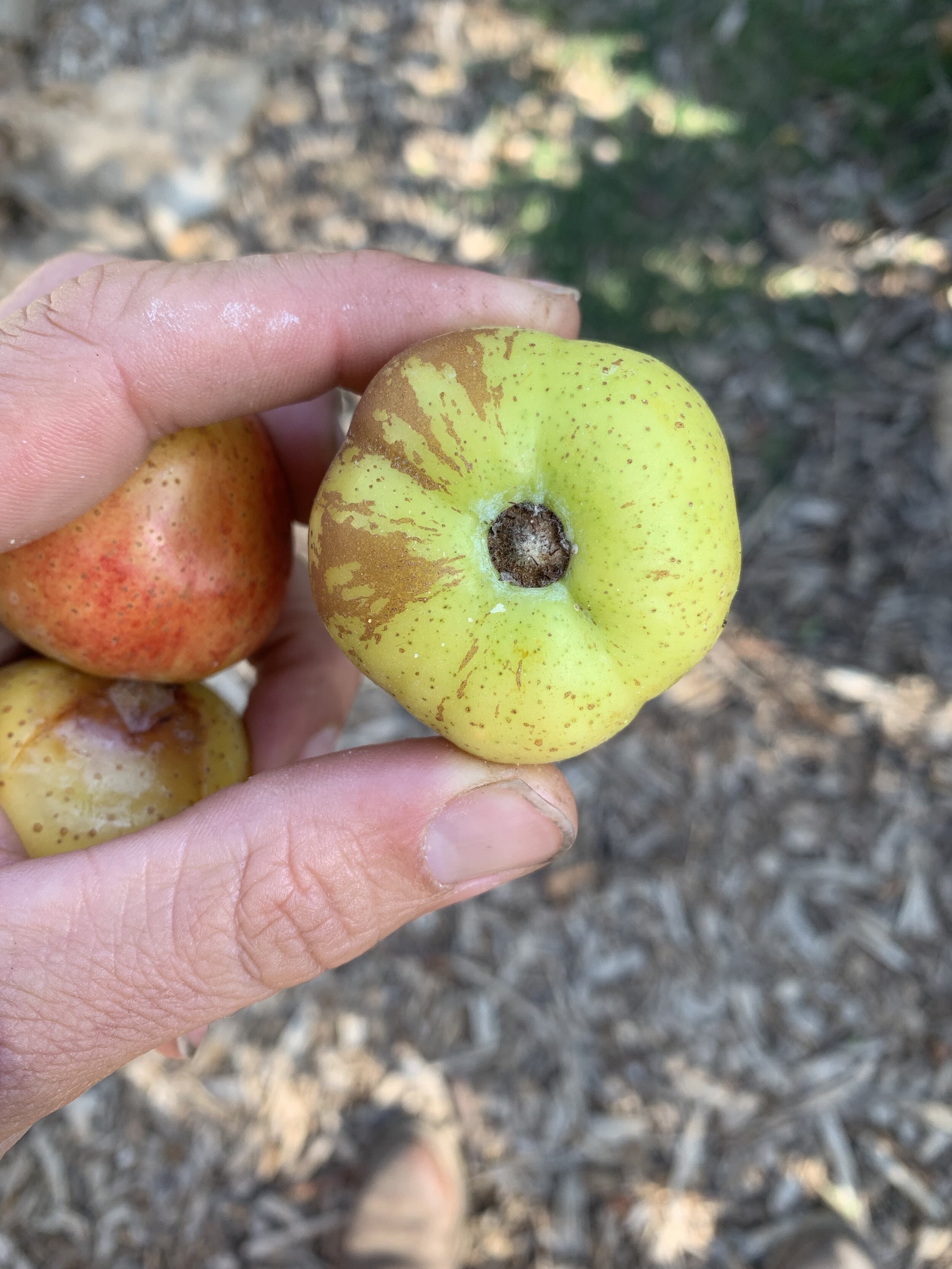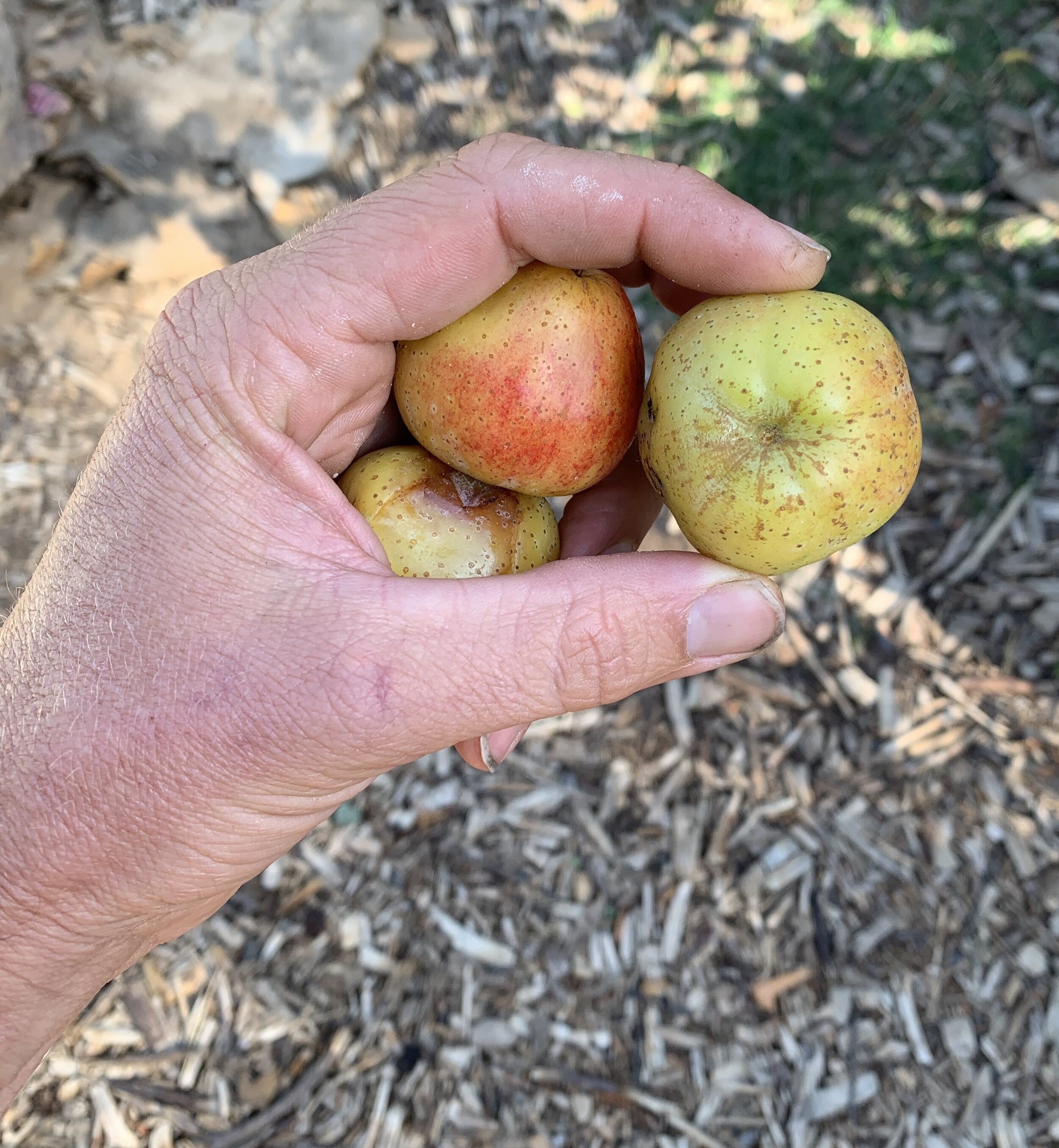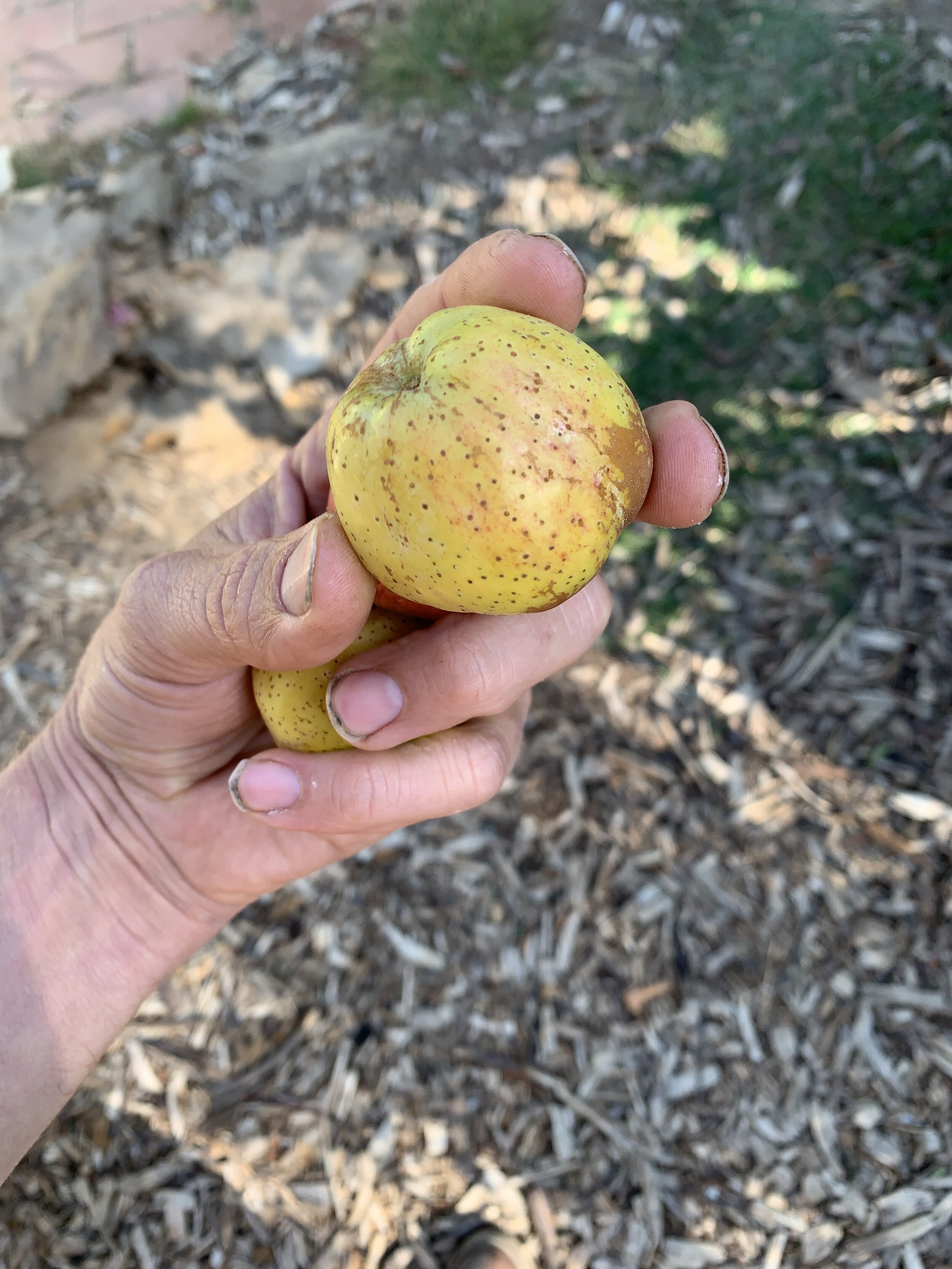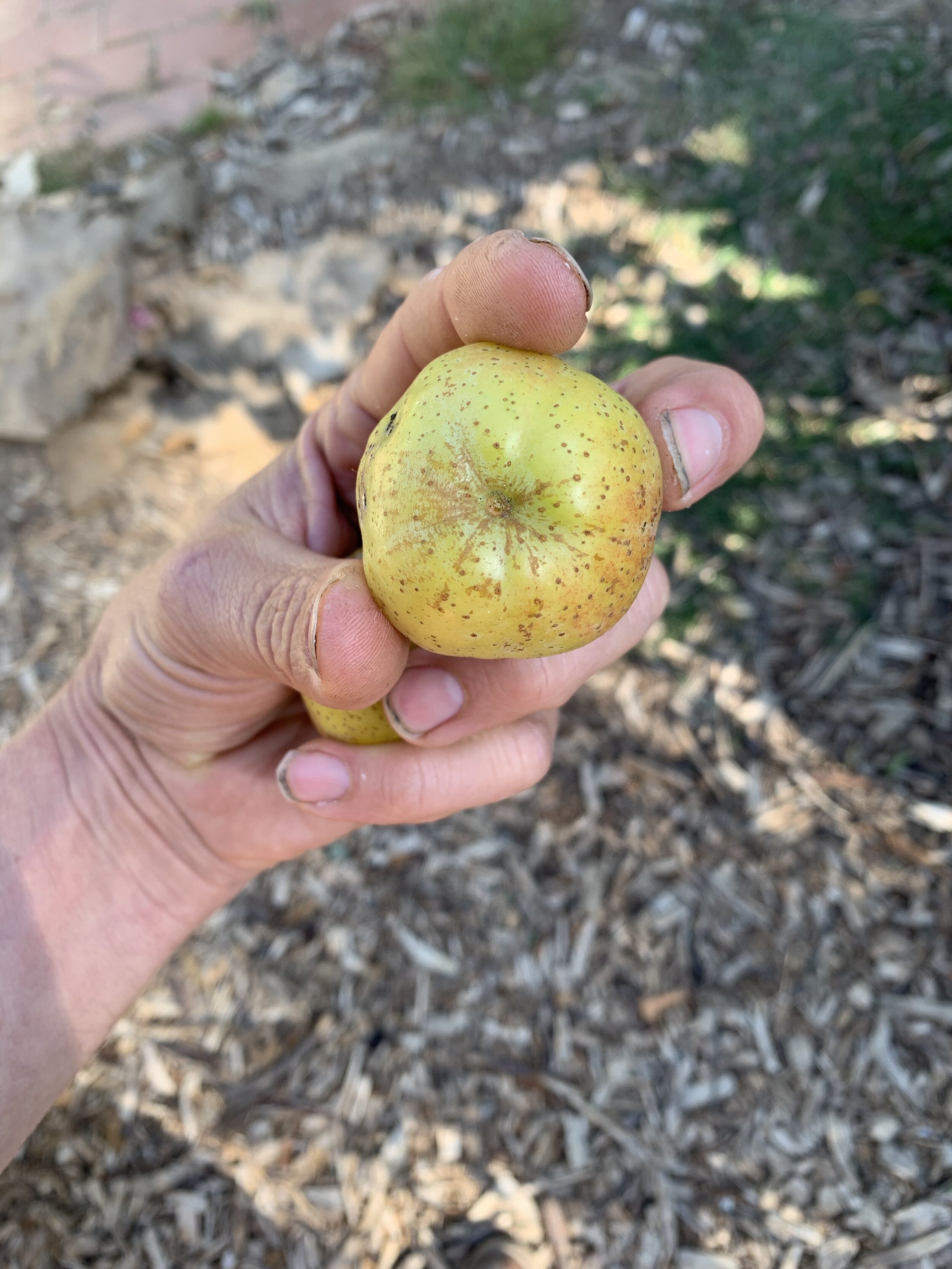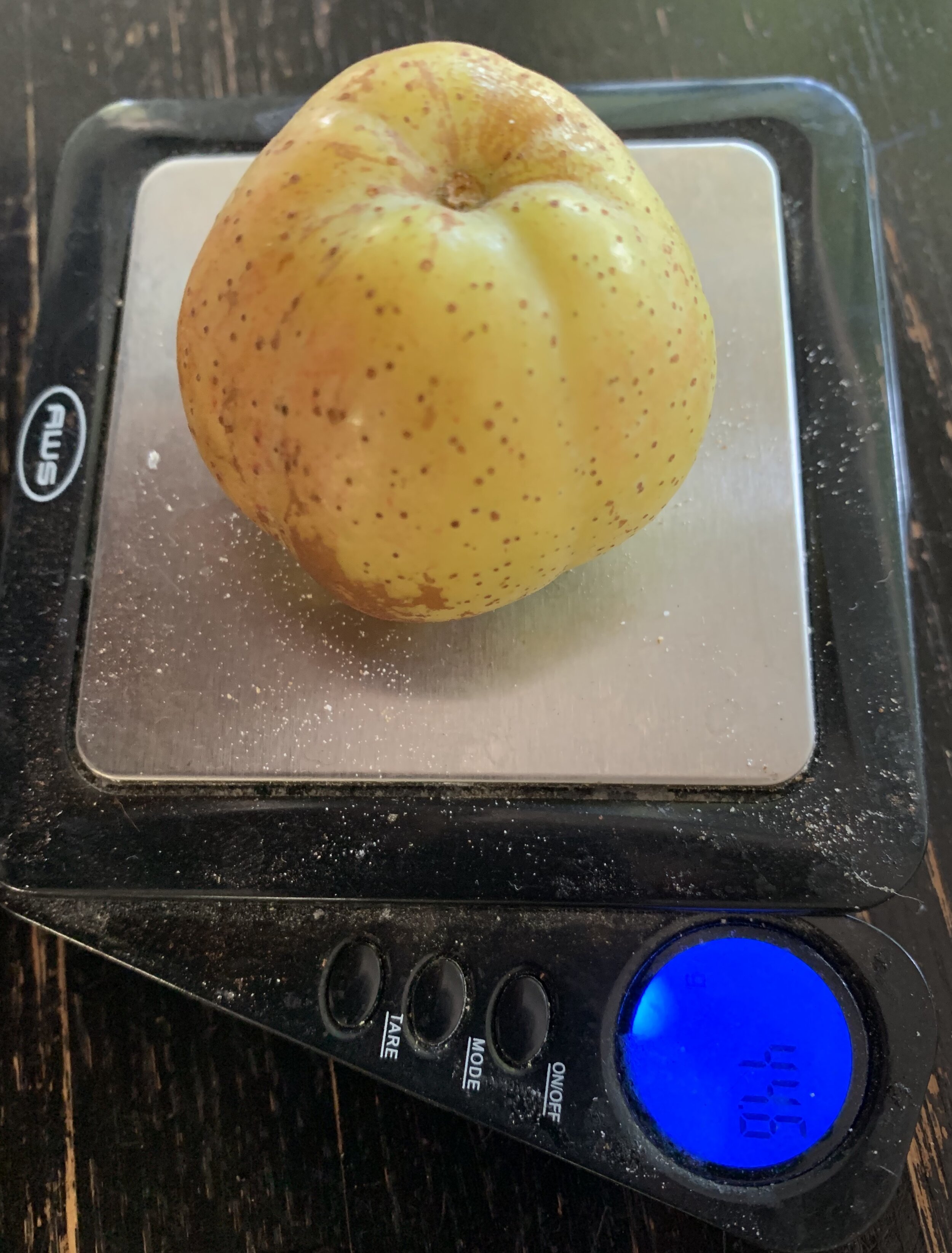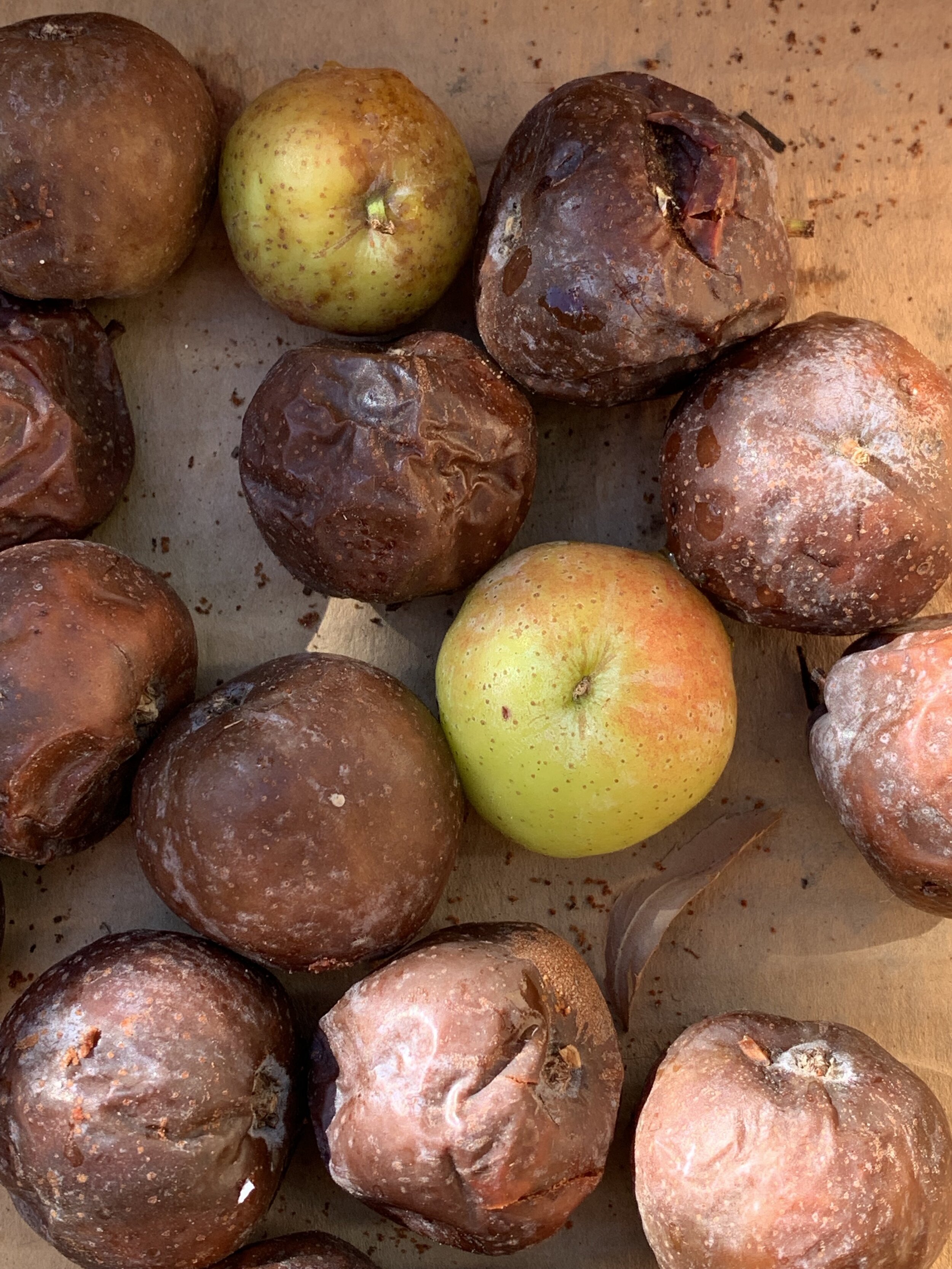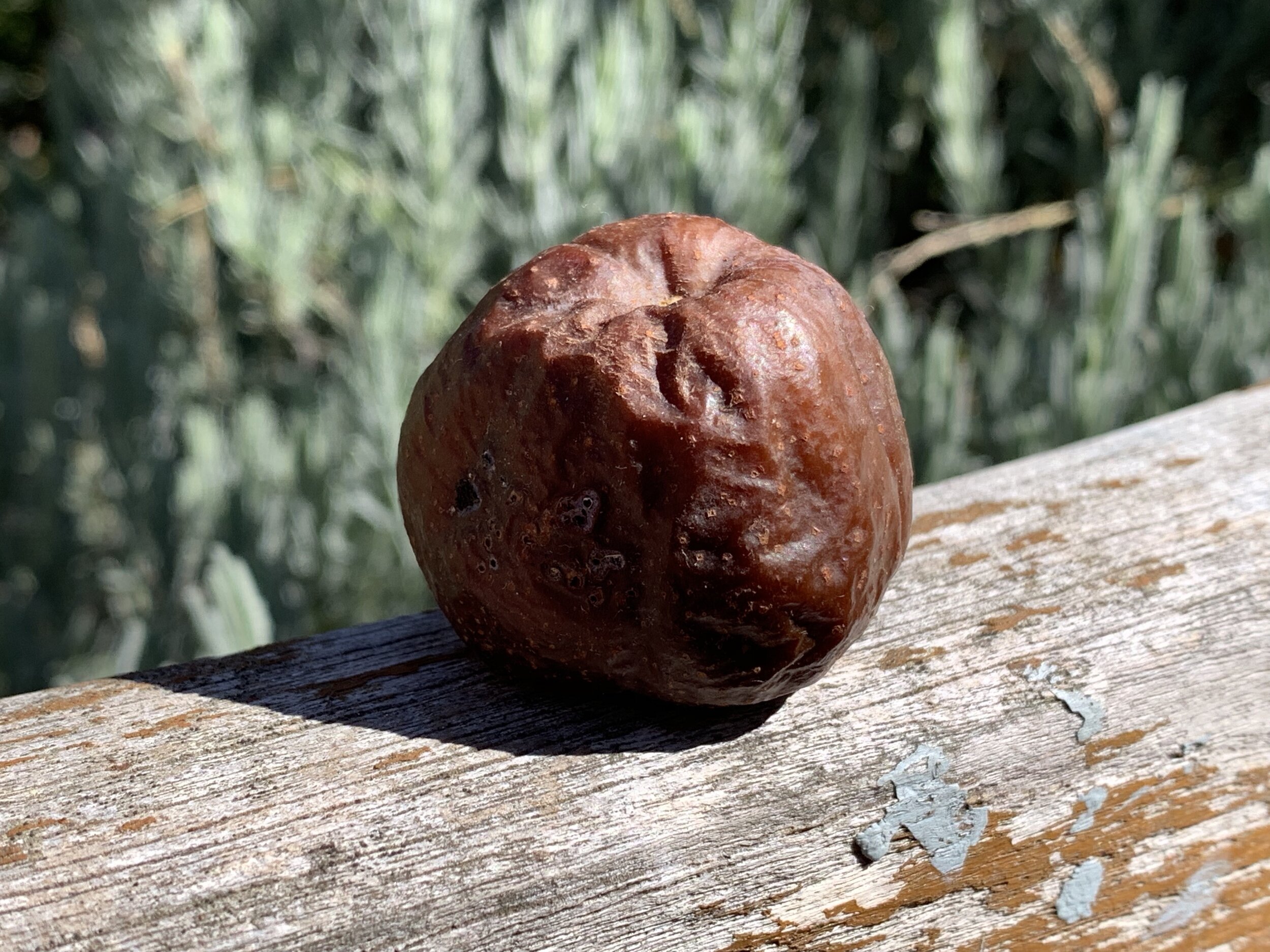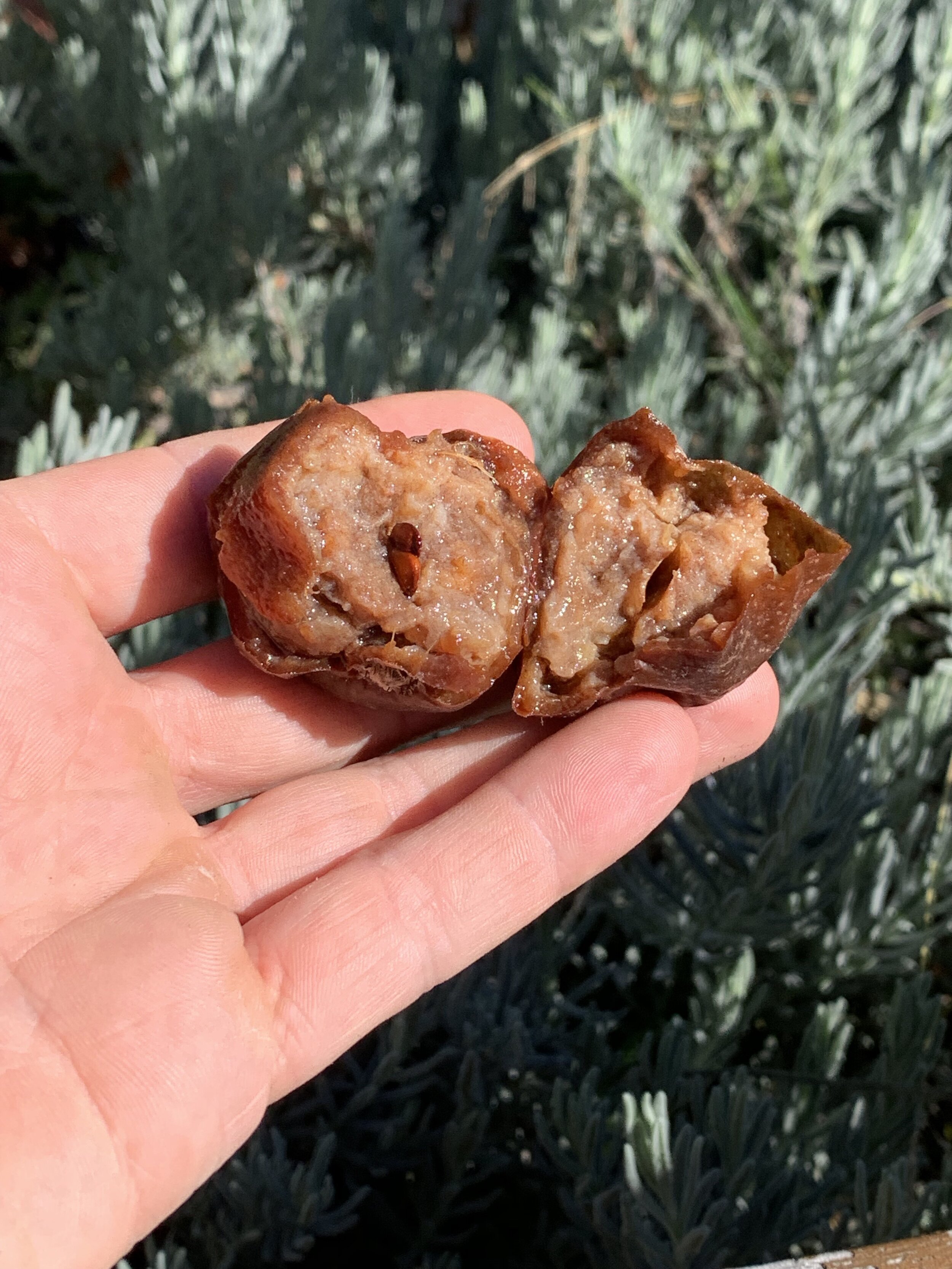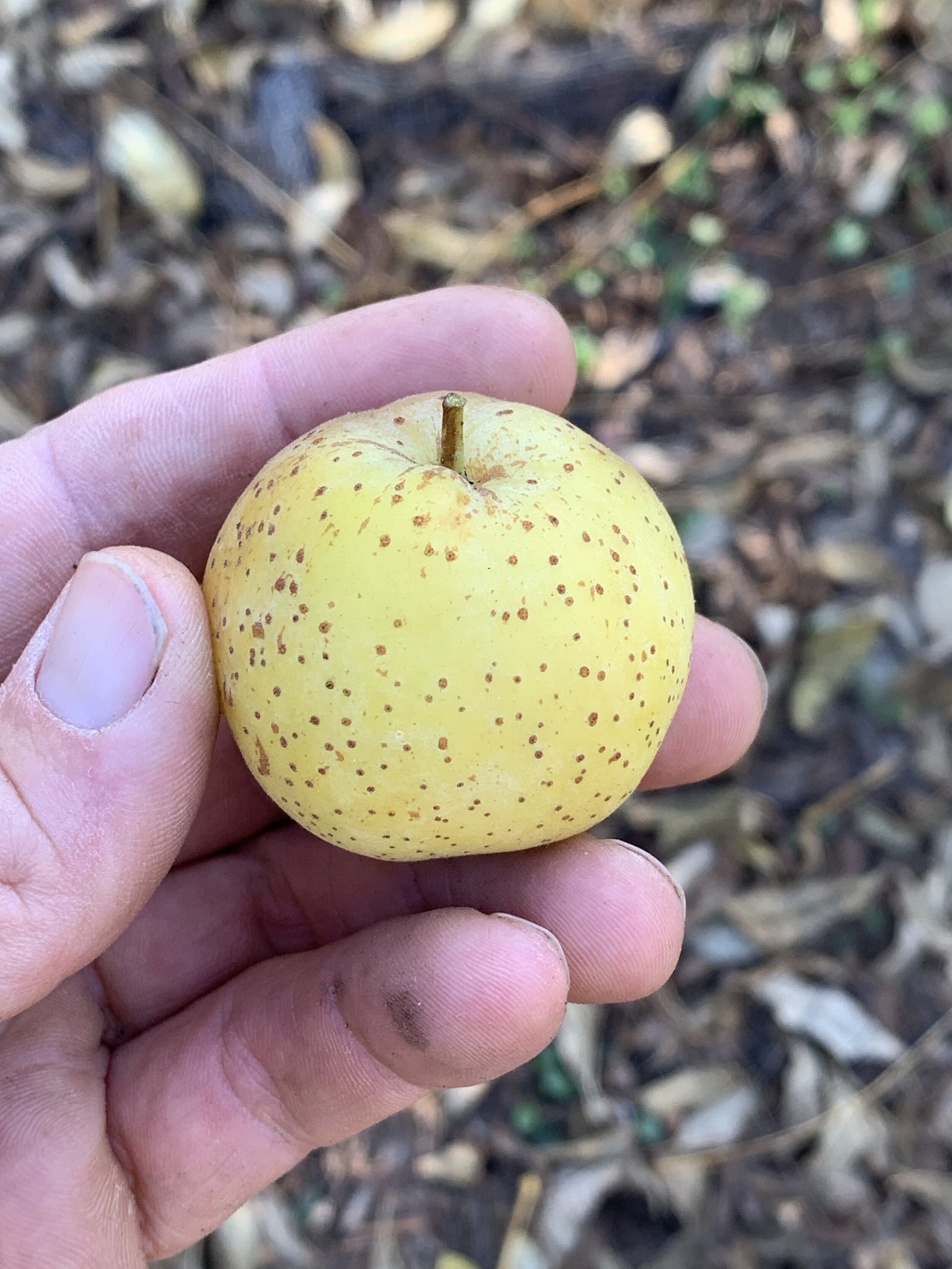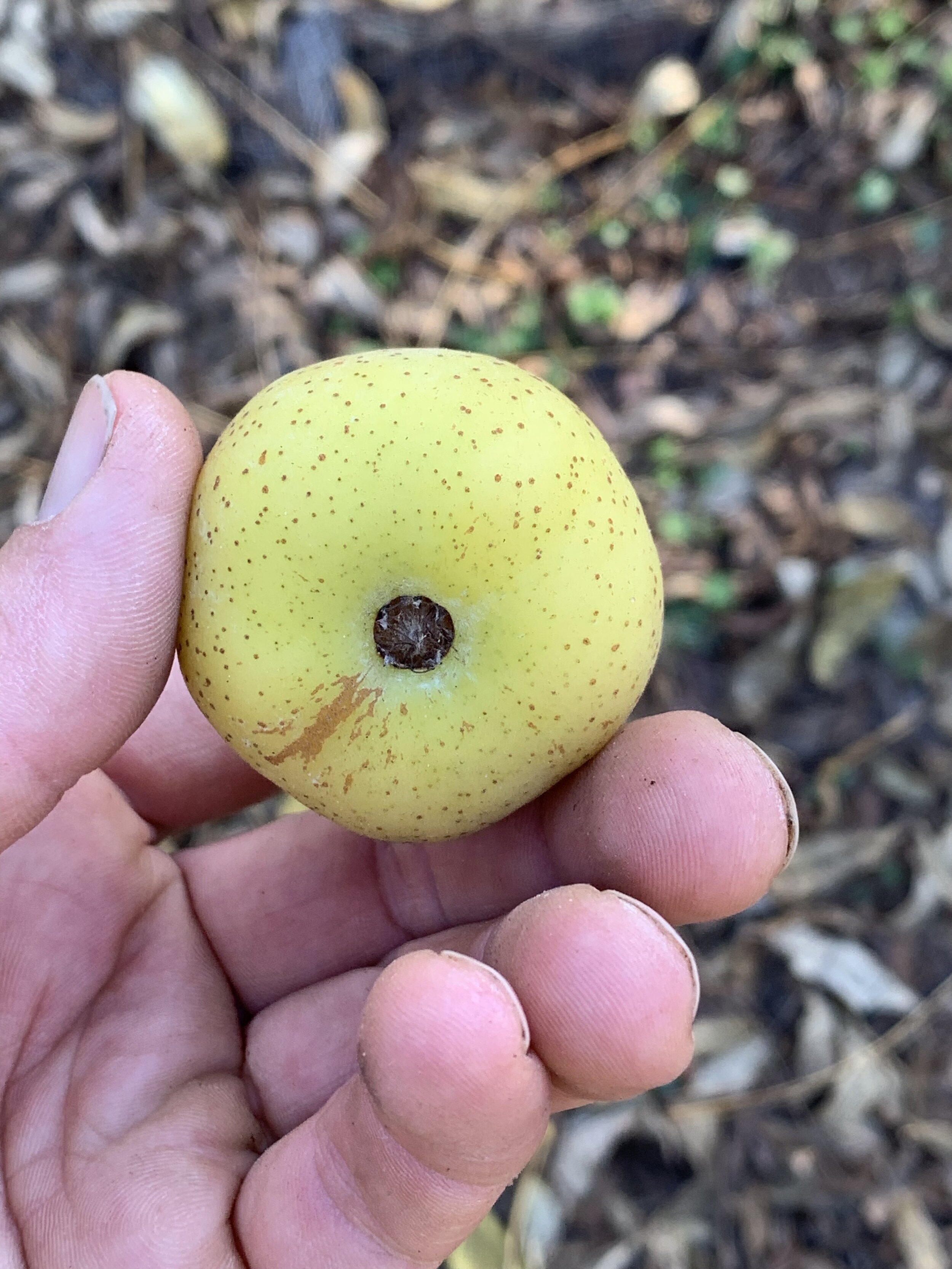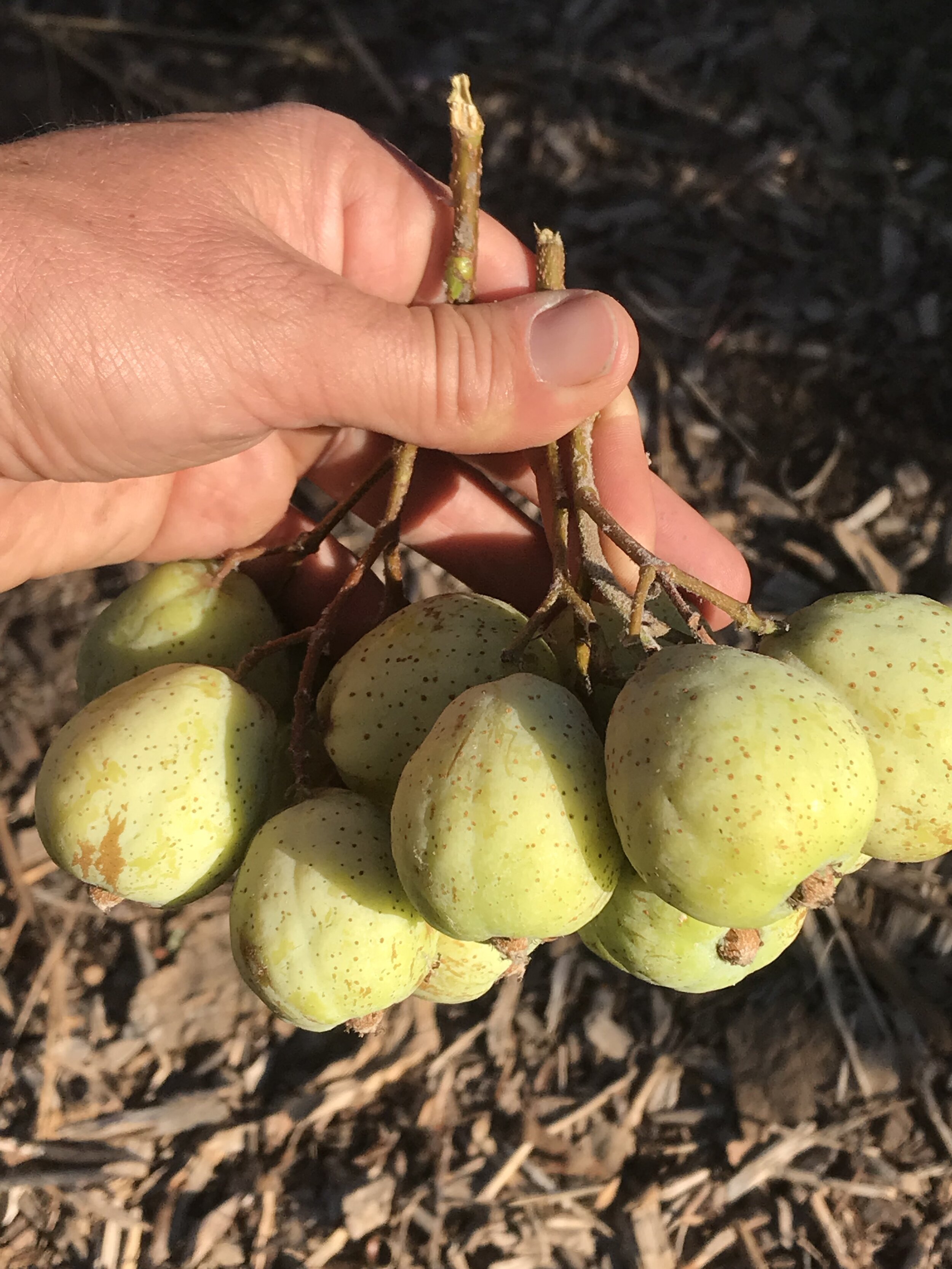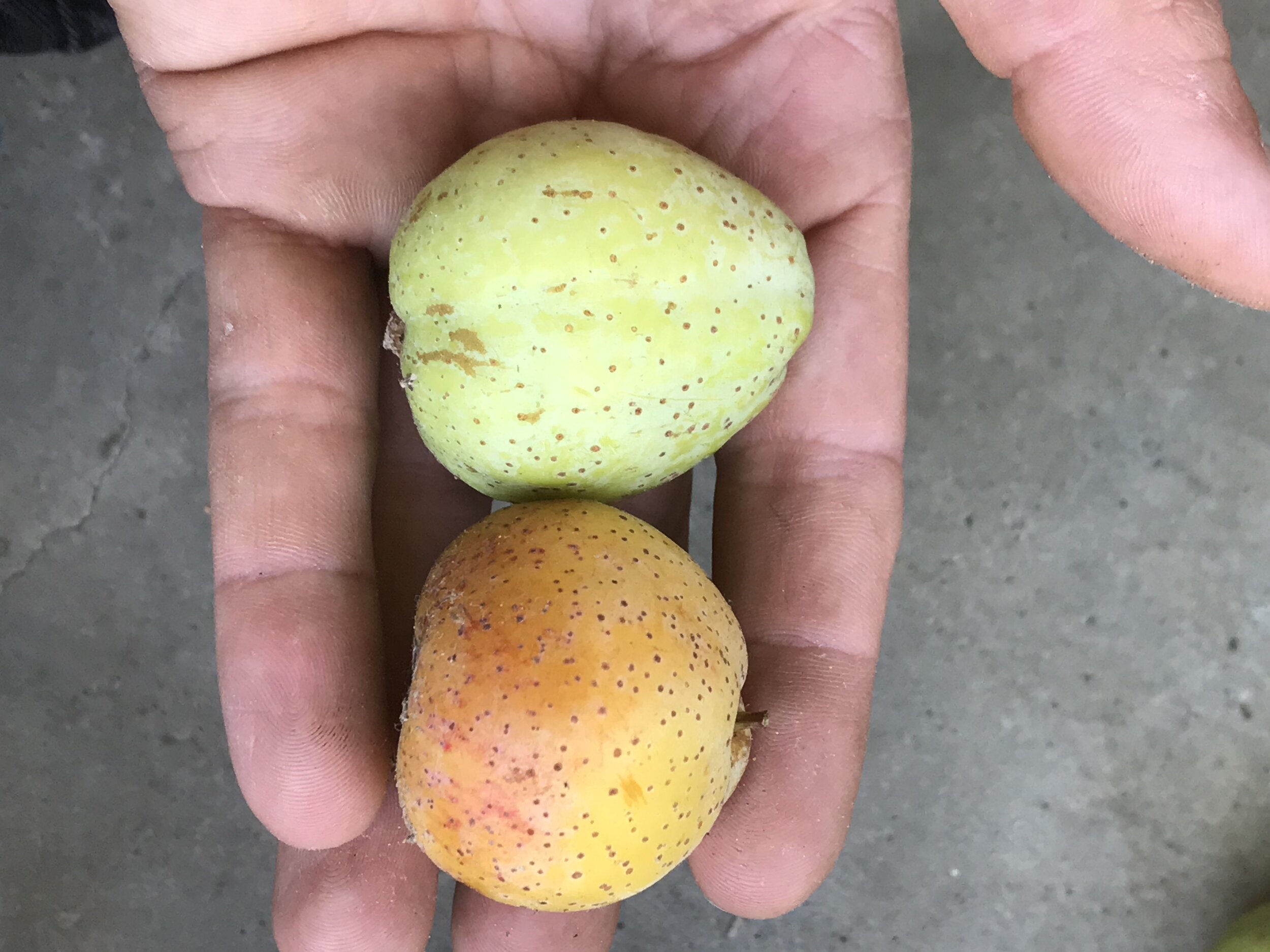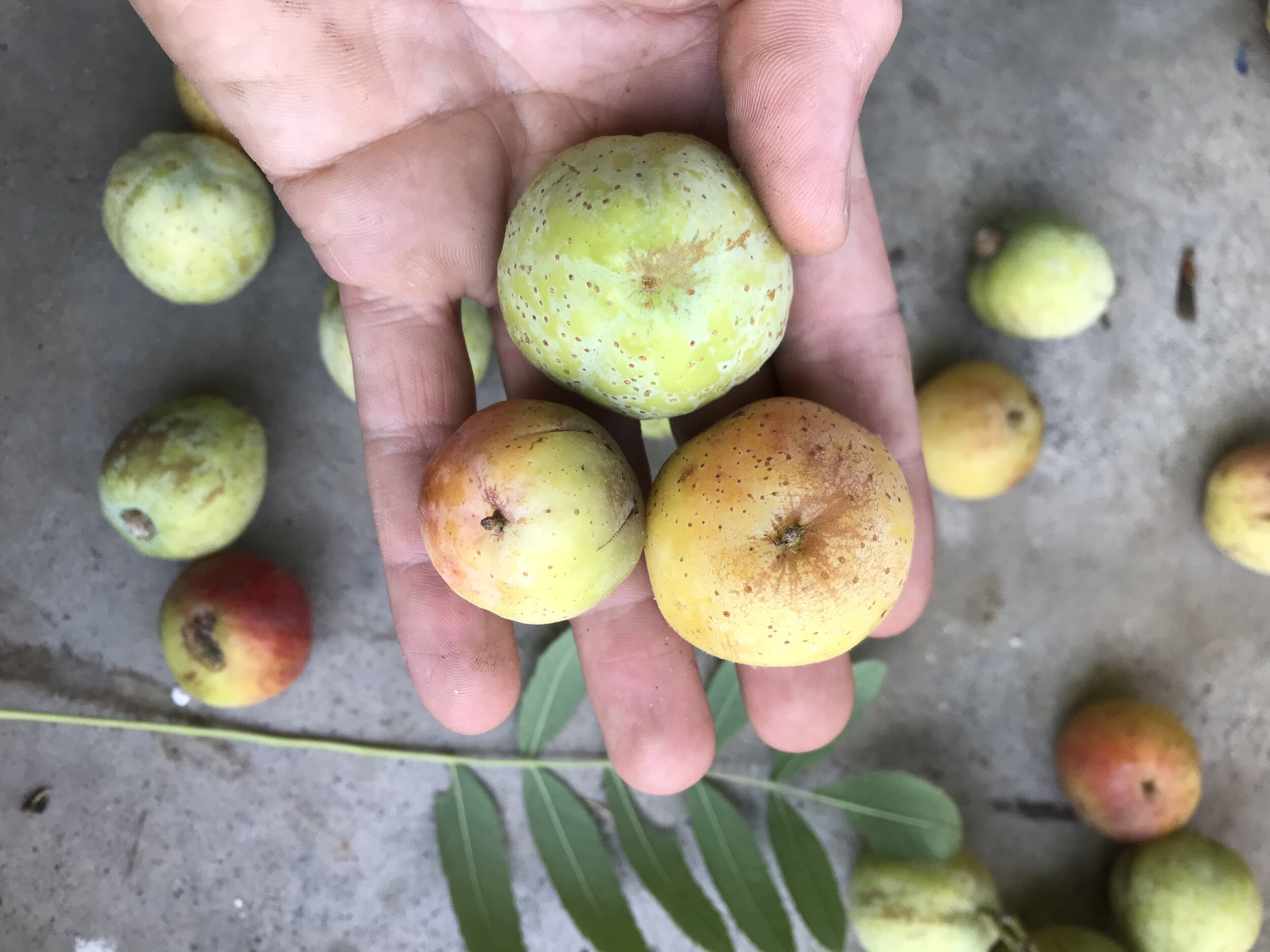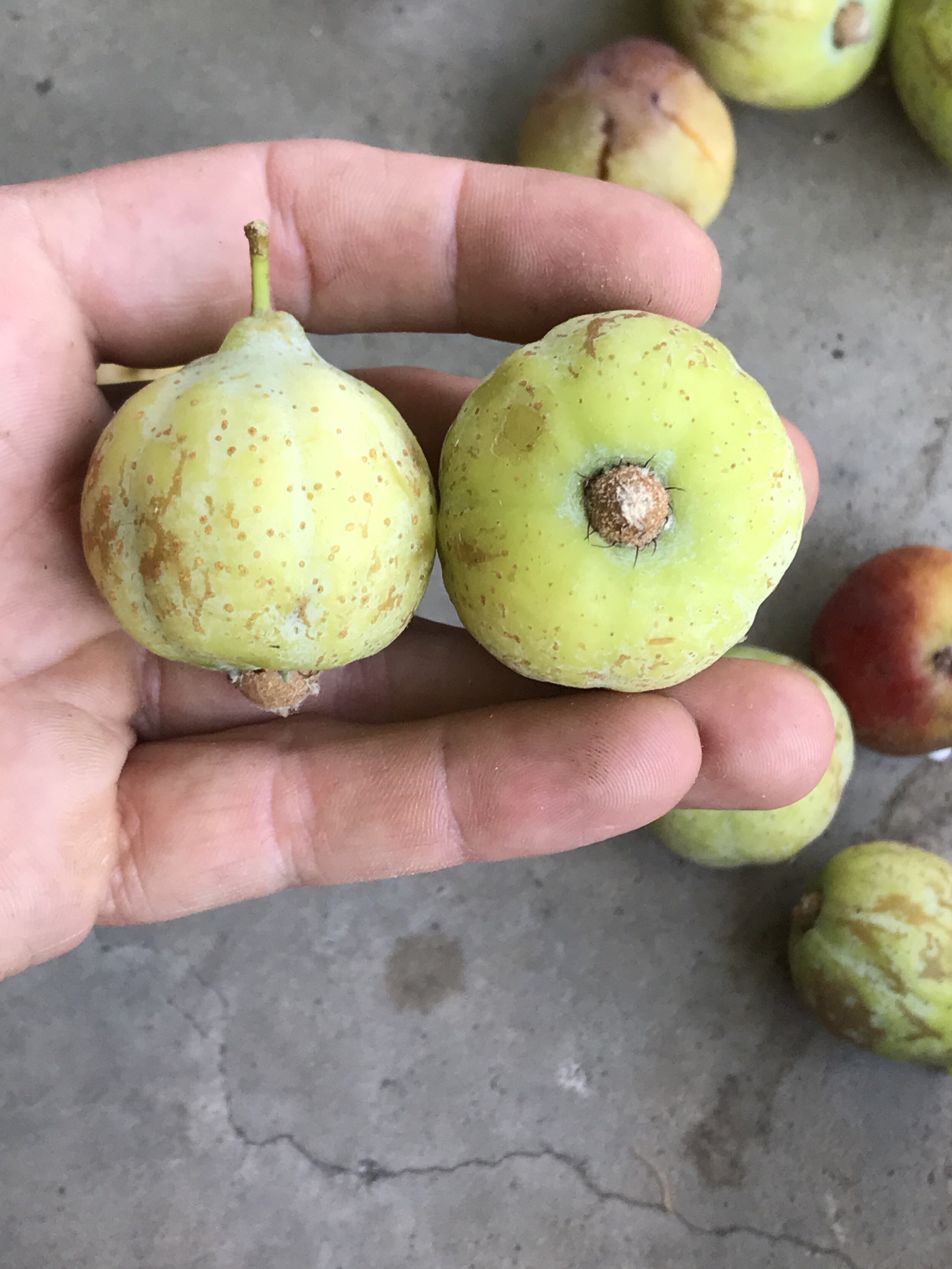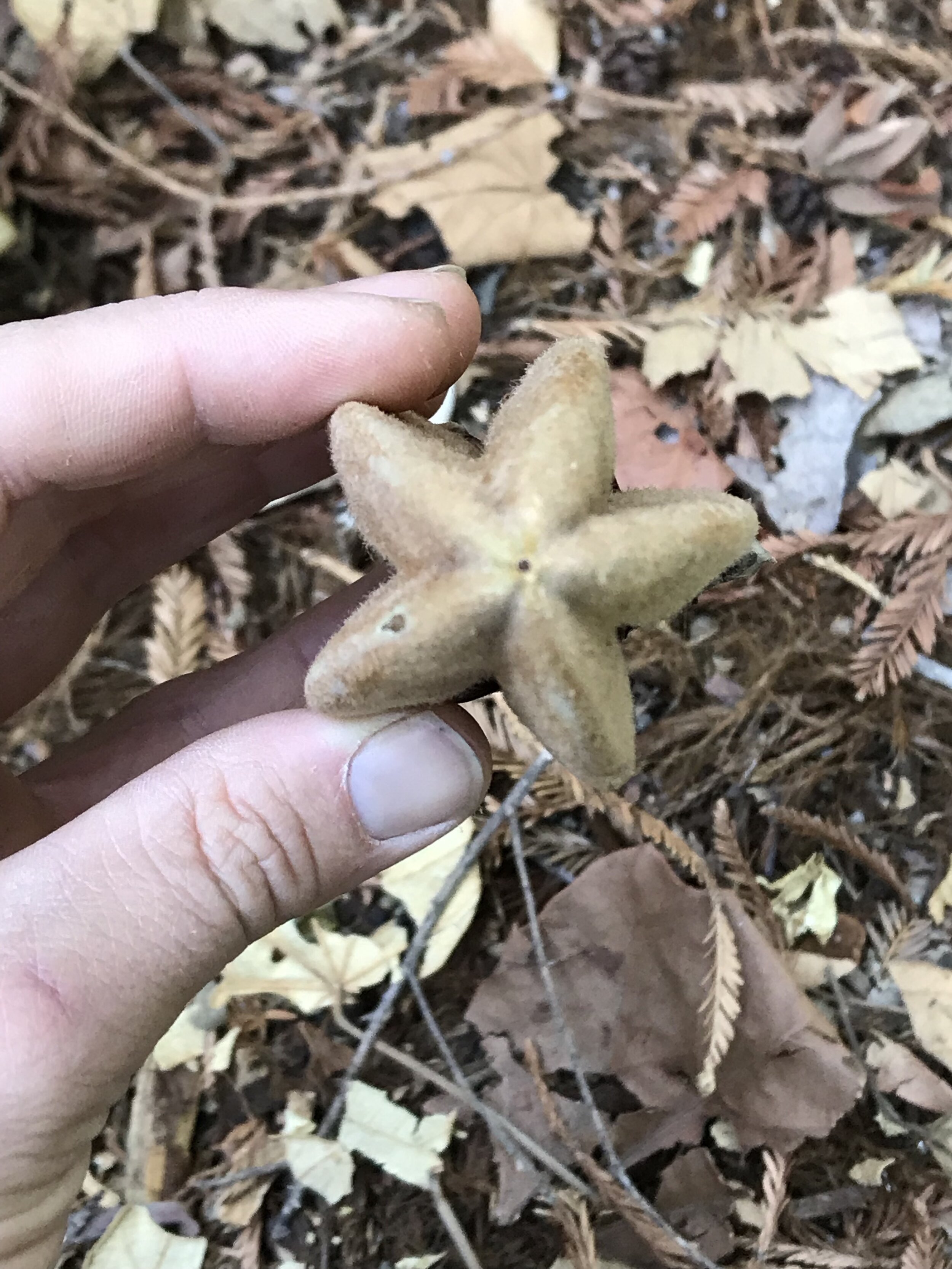In its natural habitat in Aesculus California seems to like to germinate out of rock spills, often growing out of cracks and crevices. These are very resilient trees with beautiful branching structure, often among the first trees to leaf out in late winter and the first trees to loose their leaves in mid - late summer.
Chestnuts, hazelnuts and heart nuts....
Some examples of the numerous variations of chestnut and hazel nut I am propagating this year.
Calochortus luteus
Seeds
Trifoliate Orange - Poncirus trifoliata
Native to China and Korea, this is the most cold hardy
Trifoliate orange and various hybrids of this plant are widely used as citrus rootstocks. The plant is a fairly cold-hardy citrus (USDA zone 6) and will tolerate moderate frost and snow, making a large shrub or small tree 4–8 m tall. Because of its relative hardiness, citrus grafted onto Citrus trifoliata are usually hardier than when grown on their own roots.
Recent studies have revealed that the trifoliate orange contains aurapten at a high concentration, which is one of the functional components having immunity against citrus tristeza virus (CTV).
he fruits are very bitter, due in part to their poncirin content. Most people consider them inedible fresh, but they can be made into marmalade. When dried and powdered, they can be used as a condiment.
The fruits of the trifoliate orange are widely used in medical traditions of East Asia as a treatment for allergic inflammation.
Rosa roxburgii x gigantea - Cili fruit
Rosa roxburghii (Burr Rose or Chestnut Rose) is a species of rose originating in southwest China. It grows up to 5m high, with twisted stems and peeling grey-brown bark and large attractive flowers.
The flavor of cili fruit can be described as an astringent yet smooth, sweet and sour taste. The fruit extract is widely used as a natural medicine and wellness juice in parts of Asia. The ripe fruit is typically yellow, as depicted below, but some varieties remain greenish even when ripe.
The fruit is highly regarded for its medicinal and health benefits. The fruit is rich in ascorbic acid and vitamin E. Cili fruit extract contains high Superoxide Dismutase (SOD) activity, a strong antioxidant. Rosa roxburghii has been shown to have beneficial properties for NK cell activity, microcirculation, cognitive function, plasma antioxidant capacity, stress tolerance and immune function.
The seed of cili fruit is a good source of Vitamin E and can be ground into a powder and mixed with flour or added to other foods as a supplement. The natural fruit contains 2585mg of Vitamin C per 100g fruit, which is 1.5 times higher than Acerola, or 60 times more than orange.
The Amino Acids essential to the body in cili fruit extract inlcude: Aspargine, Serine, Valine, Histidine, Arginine, Tryptophane, Methionine, Methylamino, Glutamine, Proline, Glycine, Alanine, Tyrocine, Cystine,etc. Other trace elements include Calcium, Phosphorus, Iron, Magnesium, Copper, Magnesium Potassium and Natrium.
The shrub is fast growing from seed. A year old plant will be a two foot multi-stemmed shrub. I’m waiting to see how long they take to fruit from seed.
Castanea spp. Luther Burbank hybrid chestnuts
Poncirus trifoliata - Trifoliate orange
Genetic diversity among Burbank Sorbus domestica seedlings. -Fall 2019.
Some of the diversity among the seedling Sorbus domestica selections found at Luther Burbank’s former experimental farm. Even in Europe it is rare to find Sorbus domestica fruit this large.
Chiranthodendron pentadactylon almost ripe fruit / seedpod
The first seedpods are developing on a five year old Chiranthodendron pentadactylon tree I grew from seed.

